CALL US TODAY
254-20 422 3700
NAIROBI, KENYA
Naivasha Rd
EMAIL
aatf@aatf-africa.org
1.1 Background to the Task
For several years, AATF has been collaborating with USDA-FAS to support work around facilitating access by farmers to quality and efficacious pest control products including conventional chemicals and biopesticides in the East African Region. These efforts have contributed to regulatory reforms in the region, culminating in the development and adoption of regulations and guidelines to facilitate the testing and registration of both biopesticides and conventional pesticides in the EAC region. It is important to underline that these efforts are timely considering that the region is grappling with threats posed by emerging pests such as the Fall Armyworm (FAW) and the Desert Locust. The latter is an invasive migratory pest of great economic importance in the region following the recent outbreak that has affected several parts of the greater Eastern Africa region (Kenya, Somalia, Ethiopia, Sudan, and South Sudan). Following the invasion, several stakeholders have been engaged in control campaigns involving ground and aerial sprays among other strategies. Consequently, AATF and USDA-FAS seek to assess the Impact and Efficacy of Locust Control Spraying Operations in Kenya. To execute this task, AATF is seeking the services of 5 individual consultants to form a team of experts that will help to deliver on this task.
1.2 Brief Description of AATF
AATF is a not-for-profit organisation with a mission of making available, to smallholder farmers, agricultural technologies that were previously not accessible to them. Founded on the premise of tackling poverty and food insecurity through technological interventions, AATF empowers farmers to transform their livelihoods by equipping them with better tools and inputs that would, without the organisation’s intervention, take a much longer time to reach them and cost a lot more. These efforts, combined with optimal agricultural practices and product value addition, combine to contribute to agricultural transformation in Africa leading food security and poverty reduction in sub-Saharan Africa. AATF implements its mandate to achieve an overall goal of transforming livelihoods through innovative technologies for improved incomes and food security in African. AATF sets out to achieve this ambitious goal through three strategic objectives:
(1) Diversify agricultural technologies accessed for use in SSA;
(2) Accelerate commercialisation of agricultural technologies for improved farmers’ livelihoods and
(3) Create an enabling environment for increased uptake and use of agricultural technologies in SSA.
1.3 Background on the Locust invasion and Control in the East African Region and Justification for the Current Task
The ongoing locust infestation is the worst in Kenya for 70 years and the worst in Somalia and Ethiopia for 25 years. According to FAO, in Ethiopia alone, over 200,000 hectares of cropland have been damaged by locusts, resulting in a loss of over 356,000 tons of grain.
In Kenya, the locusts were first reported in December 2019 when they 3 crossed into the country from Ethiopia. Ever since, the locusts have spread to nearly 60% of the counties, with early reports indicating that the pest had devoured nearly 175,000 hectares of cropland and a much bigger area under pastures, therefore putting the livelihoods of millions of Kenyans at risk. The pest outbreak is at a critical juncture, as locust breeding has been facilitated by unprecedented drought, followed by the rainy season. Large swarms are forecast in Kenya, Ethiopia, and Somalia; converging with crop maturation in May and June.
The United States Government (USG) and the United States Mission to the United Nations (USUN) representatives are deliberating the critical strategic question of whether current locust control operations are enough to mitigate significant crop losses in East Africa during the next planting season. Locust outbreaks across Africa are not new and have been recorded in history since biblical times. On average, outbreaks occur about every 15 years. Severe outbreaks, sometimes called ‘plagues’, occur on average every 50 to 75 years (U.S. Congress, 1990; Joffe, 1995). The question of strategic value regarding locust control operations is also not new. In the early 1990s, following the ‘plague’ of 1986-1989, the U.S. Congress commissioned a study to determine the cost and benefits of what was then hailed as the first successful campaign to intervene and stop a locust plague (U.S. Congress, 1990). In terms of direct interventions, the 1980’s campaign cost the global community some $275 million across 23 countries with the U.S. contributing about $60 million in aircraft, pesticides, and technical assistance, in that order (U.S. Congress, 1990). The congressional report, titled: Special Report: A Plague of Locusts, questioned whether the global approach taken in the 1980s campaign was effective in stopping the locust outbreak or if other factors, in particular weather, were the reasons for ending the plague (see, for example, Lockwood, 2004). There were concerns from some stakeholders at the time that the uncounted costs of the campaign, e.g., human, animal, and environmental risks associated with the widespread application of pesticides were not properly considered or assessed. Also questioned were the policy results associated with diverting longer-term development funds into short-term emergency response funding. Finally, some experts questioned the value in spending the enormous amounts of resources to control 4 a highly visible pest such as locust with the less visible but also devastating losses of seasonal endemic pests. For example, common endemic stem borers cause about 400,000 MT of grain loss in Kenya yearly. The 1990 congressional locust report found that the efficacy, efficiency, and equitability of the locust control programs are largely undocumented. It should be noted that the World Bank also assessed the 1980s campaign and reached similar conclusions to the congressional report (Joffe, 1995). That situation remains largely unchanged in the current 2019-2021 locust plague campaign. Accordingly, several organizations including the FAO have proposed some type of assessment of the current locust campaign (FAO, 2020). While the scope of a broad assessment such as the congressional report cited above would be prohibitively expensive, a specific focused assessment of a representative locust control operation including cost, efficacy, and benefits could yield valuable insight. Accordingly, we propose to conduct a focused field assessment of current operations, procedures, and efficacy associated with a small but representative pesticide control campaign in Kenya. These data can then be used to extrapolate costs and benefits across the wider control campaign. In the latest invasion, parts of Northern, Central, and South Eastern Kenya have been seriously affected. In a bid to control the invasion aerial and ground sprays were initiated in May 2020. As these efforts have been going on, a number of critical questions still remain unanswered such as:
1) Are donor-funded aerial and ground spray operations aimed at locust control having the desired outcome of reducing pest pressure?
2) Does the cost-benefit analysis justify the multi-million-dollar investment; and,
3) Are appropriate pest mitigation measures being taken to decrease harm to people, animals, and the environment?
4) How can technology, including satellite remote sensing data, contribute to more effective operations? Information gathered through the current task will be essential to helping all partners monitor and contribute to an effective response. This has been identified as a critical development activity to inform current and future locust outbreaks.
2. PURPOSE, OBJECTIVES AND DELIVERABLES OF THE CONSULTANCY
2.1 Main Goal and Specific Objectives
The main goal of the current consultancy will be to determine the performance, efficacy, cost, and benefit of spray operations on locust pest prevalence. Specifically, the consultants will be expected to:
1) Review and analyze the written country-level Locust management plans;
2) Assess the ability of international organizations to implement/support the approved plans effectively, especially given COVID constraints, in partnership with National and County Governments;
3) Assess the impact of operations on pest population, and
4) Estimate the potential size and spread of remaining locust populations in East Africa and the potential for crop damage related to remaining swarms.
2.2 Deliverables
Deliverables should include the following:
a) Background information on the locust pest and current management practices, as outlined by FAO (FAO, 2001, 2005);
b) A desk view of past assessments, analyses, and data related to pest prevalence, damage, yield/livelihood impacts.
c) An assessment of local locust control operations outlining the operations aspects including planning, targeting, and execution. This assessment will be conducted in-country and include operations and tactical spray service providers.
d) An assessment of the efficacy of 2-4 spray operations. While the focus is on aerial control this assessment might include ground control operations as a comparator.6
e) if possible, an initial assessment of the impact of spraying on yields. These results could be used to estimate a cost-benefit analysis extrapolated across the region.
f) An out-brief of the operation would be provided to USAID, USDA, and USUN, and, optionally, FAO.
3. PROPOSED TIMELINE
The task is expected to be undertaken within 60 days, starting from the beginning of May 2021.
4. CONTRACT AND REPORTING DETAILS
Type of contract: Each Consultant will be offered a fixed-price contract to include all the activities and deliverables listed above. Reporting. The consultant will report to the Senior Manager, Policy and Regulatory Affairs, or all issues related to the program and fieldwork, including in-country logistics.
5. QUALIFICATIONS, EXPERIENCE AND SKILLS
The team will be composed of five (5) inter-disciplinary technical experts, led by a Project Manager.
The individual members in the team will be expected to have a combination of the following academic and technical capabilities, experience, and competencies in order to deliver on the assignment.
AATF seeks to engage experts in the following fields:
1. Technical Experts – Entomology (2 Positions)
The Technical experts- Entomology is expected to bring to the team technical advice on matters related to the Biology of Desert Locusts. The candidate(s) must:
a) Possess at least a master’s degree, in Entomology, Crop Protection, or any other related discipline.
b) Demonstrate understanding of the Desert Locust control strategies at regional level.
c) Demonstrate a clear understanding of experimental designs applicable to assessing the efficacy of pest control products.
d) Demonstrated understanding of the management of invasive/migratory pests at regional level.
e) Have experience in interacting with government aid agencies, NGOs, and the private sector.
f) Experience in conducting the evaluation of regional or country-level projects is desirable.
g) Experience in working in the rural areas of Kenya is a MUST for the Expert to be based in Kenya.
h) Excellent communication, presentation, writing, and reporting skills.
2. Statistician (1 Position)
The statistician will support the team on experimental design and statistical data analysis. The Candidate must:
a) Possess at least a master’s degree, in Biostatistics, Statistics, Mathematics, or any other related Discipline.
b) Demonstrate experience in the design of studies in the Agricultural Sector.
c) Demonstrate clear understanding of experimental designs applicable to assessing the efficacy of pest control products.
d) Possess prior experience in analysis of large data sets using statistical software (STATA, SPSS, GENSTAT, R, etc).
3. Agricultural Economist with M&E Expertise (1 Position)
The Agricultural Economist will bring Monitoring, Evaluation and Learning Experience to the team and will support assessment of Cost Benefits of Desert Locust Control sprays. The candidate must:
a) At least a master’s degree, in Agricultural Economics or any other agricultural discipline.
b) Proven experience in carrying out evaluations of Agricultural projects, especially USAID funded projects. Experience in carrying out evidence-based impact evaluations is a MUST.
c) Good understanding of the agricultural context in Kenya.
d) Experience in qualitative and quantitative data collection analysis using statistical software.
e) High degree of independence, flexibility and ability to meet strict deadlines.
f) Excellent communication, presentation, writing and reporting skills
6.RENUMERATION AND OTHER BENEFITS
A lumpsum professional consultancy fee shall be paid to each suitable candidate for the tasks described. The project will cater for travel, accommodation, per diems and other field-related costs incurred by the team of consultants on a reimbursable basis. The Consultant will also be responsible for his/her own health insurance. AATF/USDA-FAS rates will apply.
7. TERMS OF PAYMENT
The consultants will be paid in installment as follows:
• 40% Upon signing of the Contract.
• 60% after successful completion of the task and submission of all the necessary final reports and documents.
8. APPLICATION CRITERIA
Interested consultants should submit detailed technical and financial proposals (not more than 5 pages) covering:
i. Short overview of how the candidate meets the qualifications, experience, and skills requirements (no more than one page)
ii. Demonstrated understanding of the terms of reference.
iii. Description of the proposed approach
iv. A detailed work plan (time and activity schedule)
v. Detailed budget
vi. Profile of the consultant and Curriculum Vitae.
vii. Samples of two most recent related works (and/or references for the same with contact details of the referees.
9. DEADLINE FOR SUBMISSION OF TECHNICAL AND FINANCIAL PROPOSALS
The proposal must be received by email at the address: procurement@aatf-africa.org no later than 30th March 2021 at 17:00 Hrs, East African Time.
Clearly indicate the specific position that you are applying for on the subject of your email.
10 . TERMS & CONDITIONS OF THE PROPOSAL
AATF reserves the right to request new or additional information regarding each service provider and any individual or other persons associated with its project proposal. AATF reserves the right not to make any appointment from the proposals submitted. Service providers shall not make available or disclose details pertaining to their Project proposal with anyone not specifically involved, unless authorized to do so by AATF. Service providers shall not issue any press release or other public announcement pertaining to details of their project proposal without the prior written approval. AATF Service providers are required to declare any conflict of interest they may have in the transaction for which the tender is submitted or any potential conflict of interest. AATF reserves the right not to consider further any proposal where such a conflict of interest exists or where such potential conflict of interest may arise.
11. CONFIDENTIALITY STATEMENT
All data and information received from AATF for the purpose of this assignment are to be treated confidential and are only to be used in connection with the execution of these Terms of Reference. All intellectual property rights arising from the execution of these Terms of Reference are assigned to AATF.
CALL US TODAY
254-20 422 3700
NAIROBI, KENYA
Naivasha Rd
EMAIL
aatf@aatf-africa.org

Dr. Canisius Kanangire
Executive Director
Dr. Canisius Kanangire joins AATF from the African Ministers’ Council on Water (AMCOW), a pan-African inter-governmental institution, based in Abuja, Nigeria, where he served as the Executive Secretary from September 2016.
He holds a PhD and an MSc degree in Aquatic Sciences, with specialization in Freshwater Ecology, Aquaculture and Wetlands management, both from the University of Namur, then “Facultés Universitaires Notre-Dame de la Paix (FUNDP), Namur (Belgium). He also holds a University Degree (Licence) in Biology with a major in Environmental Sciences and an Undergraduate Certificate (Graduat) in Biology and Chemistry both from the “Institut Supérieur Pédagogique de Bukavu,” in D.R. Congo.
Dr. Kanangire has over 35 years experience in leadership roles, having served previously as the Executive Secretary of the Lake Victoria Basin Commission (LVBC) between 2011 and 2016 and Regional Manager for Capacity Building, and Head of Strategic Planning and Management at the Nile Basin Initiative (NBI) between 2004 and 2011. Prior to these international positions, Dr Kanangire served as a lecturer and Dean of the Faculty of Agriculture at the University of Rwanda and member of the Board of Directors of ISAR, the Rwandan Institute for Agricultural Research that was restructured to become the current Rwanda Agricultural Board (RAB).
He is an astute administrator and experienced technocrat with a wealth of knowledge in leadership and management of international institutions, including developing strategic partnerships and networks at regional, continental and global levels. A national of Rwanda, Dr. Kanangire speaks various languages including English, French, Kiswahili and Kinyarwanda.
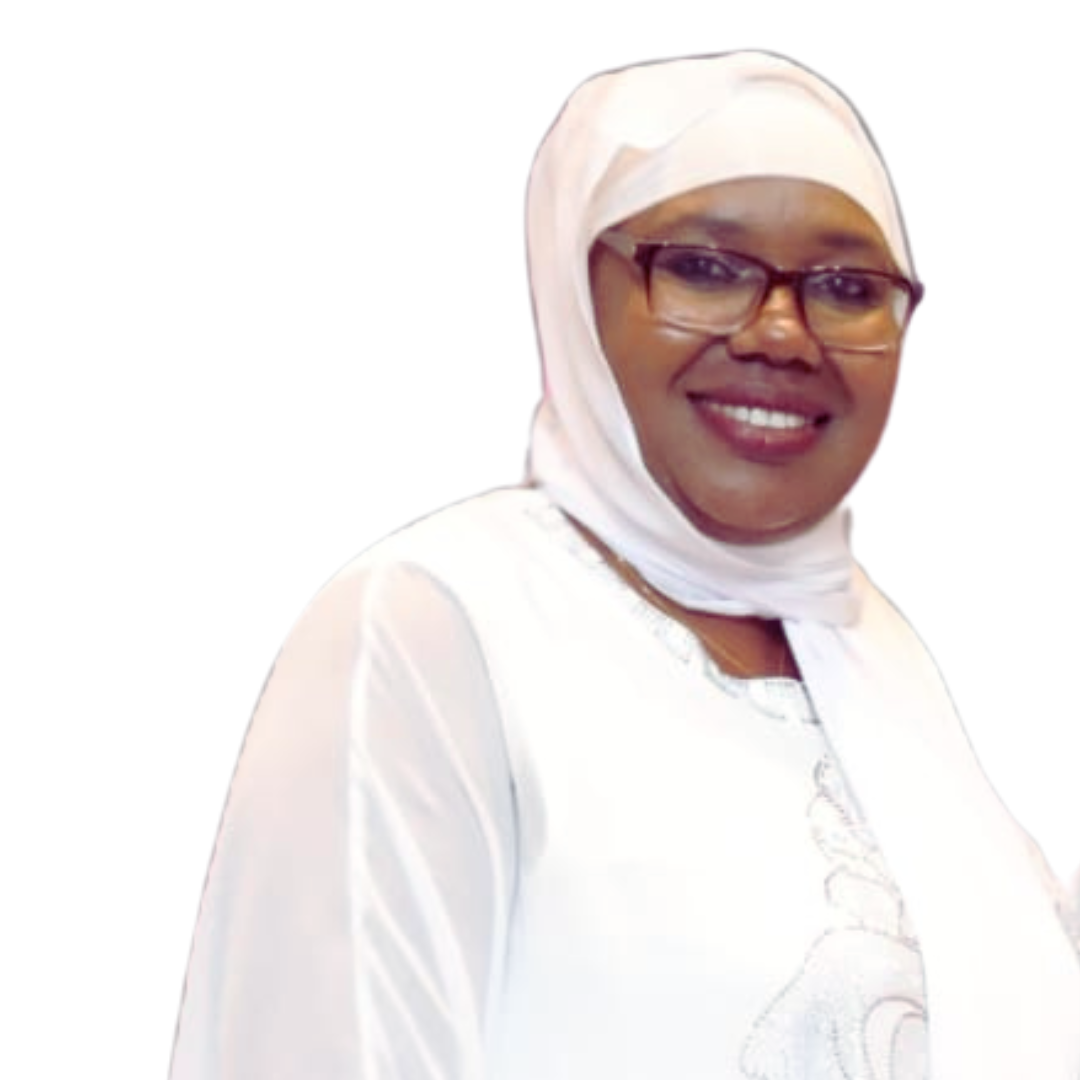
Fatuma Wario
Administrative & Events Coordinator
Fatuma Wario holds a Bachelor of Business Administration (BBA) from the Kenya Methodist University, a Higher Diploma in Human Resource Management and a Diploma in Business Administration and Management from Kenya Institute of Management.
Before, joining AATF she worked with FARM Africa Regional office in Nairobi as an administrative secretary for seven years, the Catholic Organization for Relief and Development – AID (CORDAID) for a period of one year and with GTZ for four years as an administrative assistant. Fatuma is responsible for general office management, management of transport services, and events organisation among other administrative duties. She is Kenyan.
Shehu Muhammad Dandago
Chief Agronomist
Shehu Muhammad Dandago has over 20 years of multi-disciplinary experience in both Industrial, public, private, and International non-governmental (NGO) organizations as Laboratory Analyst, Research Associate, Food Security, and Seed System Agronomist in both Emergency and Developmental programming.
He has a master’s degree in Agronomy from Bayero University Kano (BUK) Nigeria, Postgraduate Diploma in Environmental Management, and B.Sc. Degree in Applied Biology. Shehu is a Nigerian national.

Shey R. Tata
Member, Board of Trustees
Shey holds a BA in International Relations from Amherst College in Massachusetts, an MBA in Finance and Management from Yale University School of Management and a CPA from the University of Maryland USA.
Shey began his professional life working as a Team Leader and Senior Economic Development Specialist for a Private Public Partnership entity for economic development in Washington DC. He later joined the World Bank where he worked as a financial analyst. He later took leave from the World Bank and was appointed as the Interim Director of Finance for an International Agriculture Research Association for West Africa.
Shey later returned to the World Bank where he served under different positions leading teams and advising decision makers in fiduciary management, governance, institutional and program evaluation, administration, resource mobilization and outreach in Africa, Asia and the US. In recent times, Shey has also consulted and provided advice to international development (AfDB and IFAD).

Prof. Jennifer Ann Thomson
Board Chair Emeritus
Prof. Jennifer Thomson has a BSc in zoology from the University of Cape Town, an MA in genetics from Cambridge University and a PhD in microbiology from Rhodes University in South Africa. She was a post-doctoral fellow at Harvard Medical School and spent a sabbatical year at the Massachusetts Institute of Technology. She was a lecturer, senior lecturer and Associate Professor in the Department of Genetics at the University of the Witwatersrand in South Africa before starting and being the Director of the Laboratory for Molecular and Cell Biology for the Council for Scientific and Industrial Research. She then became Professor and Head of the Department of Microbiology at the University of Cape Town (UCT), a post she held for 12 years until the Department merged with the Department of Biochemistry. She is now Emeritus Professor of Microbiology in the Department of Molecular and Cell Biology at UCT. Her main current research interests are in the development of maize resistant to the African endemic maize streak virus (MSV) and tolerant to drought. The MSV work has been shown in glasshouse trials to give excellent protection and was the first transgenic crop developed in Africa, by Africans for an African problem. Other positions held in the past include the Deputy Dean of Science at UCT, chair and member of the South African Genetic Engineering Committee, co-founder and chair of SA Women in Science and Engineering, and Vice-President of the SA Academy of Science. She is a Fellow of the Royal Society of South Africa and of UCT and Vice-Chair of the board of the International Service for the Acquisition of Agribiotech Applications (ISAAA). She is a member of the National Advisory Council on Innovation which advises the Minister of Science and Technology and chairs the South African chapter of the Organization for Women in Science in the Developing World. Honours received include the L’Oreal/UNESCO prize for Women in Science and an honorary doctorate from the Sorbonne in Paris. She is a regular writer and speaker internationally on the subject of genetically modified organisms, especially crops and foods derived from them. These include addressing the World Economic Forum in Davos for two successive years, and the United Nations as the guest of Secretary General Kofi Annan. Her three books, Genes for Africa, Seeds for the Future and Food for Africa are geared towards the interested layperson.

Prof. Maggie Gill
Member, Board of Trustees
Professor Maggie Gill has had a 40-year career in the agri-food sector, split almost evenly between conducting research, managing research programme funding and advising research funders, in the UK , New Zealand, European Commission and, for international development, the World Bank and numerous national international development departments.
Her original interests were in livestock nutrition (mainly grass-fed sheep and cattle) but over time those broadened to interests on interactions between agriculture more generally, with the environment and again food systems and in the last two decades to the interface between science and policy.
She was the first Chief Scientific Adviser on Rural Affairs and the Environment in the Scottish Government and currently chairs both the Scottish Science Advisory Council and BBSRC’s Sustainable Agriculture and Food Strategy Panel. She was instrumental in creating the Zoonoses from Emerging Livestock Systems research programme (ZELS Programme Impact Report – UKRI) whilst a Senior Research Fellow at DFID, was a member of the Sata, Evidence and Science Working Group of the RSE post-Covid-19 Futures Commission (Home – RSE Post-Covid-19 Futures Commission :RSE Post-Covid-19 Futures Commission (rsecovidcommission.org.uk) and a member of the Science legacy of Covid Working Group Working Group of the SSAC (SSAC Report – Building on the Science Legacy of Covid-19 in Scotland.pdf (scottishscience.org.uk)
She is an Emeritus Professor at the University of Aberdeen, currently living in rural Aberdeenshire.

Joanne Muthie
Digital Communications Officer
Joanne is an experienced Digital Media Specialist with a demonstrated history of working across integrated communication and marketing agencies in Africa. Joanne’s love for technology merged with communications has seen her pursue new skills and technologies in order to more effectively meet client needs towards business goals.
Joanne is a trained scientist who has honed her skills as an all-rounded digital communications specialist and brings onboard experience in social media strategy and community management, media buying on social media, search engines as well as local publishers’ engagement, use of influencers, and general digital partnerships.
Over the last decade, She has worked with Ogilvy Africa through their flagship 360 IMC Agency- Blueprint Africa and Oxygene MCL, a boutique marketing and communication agency servicing local and international brands such as KRA, KCB Bank, Safaricom, Radisson Blu, Simba Corp, JCG, Mondelez Africa, Ecobank, and WWF. Joanne is also passionate about digital media production through creative design, animations, websites/microsites, and mobile applications’ end-to-end project management. In addition, she brings insights and knowledge management through social listening and analytics. Joanne is a Kenyan national.
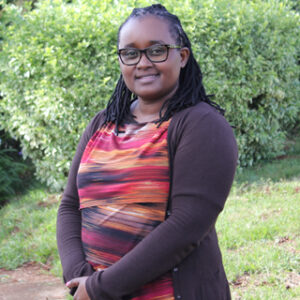
Josephine Mailu
Head, Human Resources
Josephine Mailu is a Human Resources practitioner holding an MBA in Human Resources and Strategic Management from Daystar University and a BBA in Human Resources Management from Kenya Methodist University.
Before joining AATF, Josephine worked with the International Medical Corps – Kenya, a non-profit relief and development organisation dedicated to saving lives and relieving suffering through health care training. Prior to that, she worked with Save the Children International, Somalia country office- an organisation focusing on children’s rights, AMURT International Kenya and South Sudan, and Palma Group.
Ms. Josephine Mailu has over 20 years’ experience in Human Resources Management in HR Strategy formulation and implementation, Organizational Effectiveness, Culture Transformation, Staffing and Recruitment, Succession Planning, Talent Management, Compensation and Benefits, Performance Management, Formulation of HR Policy & Procedure and Employee Relations.
Josephine is responsible for the human resource function at AATF. Josephine is Kenyan.

David Tarus
Program Officer – OFAB
David Tarus holds an MSc degree in Managing the Environment: Risk Assessment of GM crops from the Aberystwyth University, Wales, and University of Adeline, Southern Australia BSc (Hons) degree in Agricultural Education and Extension from the University of Nairobi, Kenya.
David also holds other professional training among them training in Intellectual Property and Technology Commercialisation from the University of California, Davis, USA, Project Planning, Management and Evaluation from the Institute for Capacity Development, Windhoek, Namibia, Certified Private Seed Inspector in Kenya, Lead Instructor for Preventive Controls for Human Food accredited by US-based Preventive Controls Alliance(FSPCA), Results Based Management training administered by Regional Centres for Learning and Evaluation of Results, Qualified ISO 9001:2015 on Quality Management Systems, Understanding and Implementation and Fertilizer Policy and Marketing Strategies in Africa.
Before joining AATF, David worked with the Ministry of Livestock and Fisheries Development, Trans Nzoia District, as an extension officer where he was instrumental in the implementation of both the National Agricultural and Livestock Extension Project (NALEP) and the Kenya Agricultural Productivity Project (KAP) in the district. David has extensive experience spanning over a period of 13 years in policy, program coordination, partnership management, and international policy and regulations having worked in partnership-based collaborations across Africa, mainly gained at AATF in different project leadership and coordination roles involving multiple partners and stakeholders.
Working with partners, he has provided strategic leadership in several regional collaborative efforts in the development sector. He has been consulted by the Centre for Genetic Engineering and Biotechnology (ICGEB) under the auspices of its Biosafety Capacity Building Project for sub-Saharan Africa as an expert and adviser in bio-regulatory issues. Previous roles at AATF involved coordinating efforts in seed sub-sector policy and regulatory improvement in six countries of Africa, implementation of policy on use of bio-fertilizers and bio-pesticides in six countries of Sub-Sahara Africa, and facilitation of regulatory aspects of aflatoxin control in maize and peanuts project in conjunction with United States Department of Agriculture (USDA)-Foreign Agriculture Service (FAS) and COMESA. David also coordinated food safety capacity enhancement efforts involving the private sector, regulators and policy makers, an effort that was implemented in Eastern and Western Africa. David is a Kenyan national.

Prof. Aggrey Ambali
Chair, Board of Trustees
Prof. Aggrey Ambali is currently serving as Head of Science, Technology and Innovation Hub (NSTIH) at the New Partnership for Africa’s Development (NEPAD) Agency, where he oversees the development and implementation of programs in education, health, and science and technology. He has also served in other positions at the NEPAD Agency, including Director of Policy Alignment and Program Development, Coordinator of the African Biosciences Initiative, and Coordinator of Science and Technology for the Southern Africa region.
He has been actively involved in science, technology and innovation programmes of the African Union.
He coordinated the work of the African Union High Level Panel on Science, Technology and Innovation which was appointed in July 2012 and mandated to prepare a ten-year African Union Science, Technology and Innovation strategy for Africa, 2014- 2024 (STISA 2024). Outside the NEPAD Agency, he served as an external member of Governing Council of the University of Namibia, and member of the Innovation Council of the Common Market for Eastern and Southern Africa (COMESA).
He serves on several committees including the Technical Advisory Committee of the Biosafety Program of ICGEB, Chair of the Management Committee of the African Biosafety Network of Expertise (ABNE), member of the Advisory Panel of the Biosciences Eastern and Central Africa (BecA), etc.
Prof. Aggrey Ambali is currently coordinating the process of establishing a high-level African Union panel on harnessing emerging technologies for Africa’s development. He obtained a PhD degree in Population Genetics from Dalhousie University, Canada, Masters of Science in Aquaculture from Asian Institute of Technology, Thailand and Bachelor of Science in Agriculture from University of Malawi.
He served as a faculty member at the University of Malawi where he became a Professor of Biology in 2003.

Dr. Boniface K. Kaberia (Ph.D.)
Member-Board of Trustees
Dr. Boniface K. Kaberia (Ph.D.)
Dr. Kaberia is the current Senior Technical Advisor to Kenya’s Cabinet Secretary for Agriculture and Livestock Development. He also sits on the National Technical Committee (under the Principal Secretary State Department of Livestock Office) which is developing the livestock master plan to actively champion meat industry modernization and consumer safety assurance through industry bodies.
Dr. Kaberia is a seasoned expert in food security and livestock development. He has over 25 years of experience in leadership and senior management positions in development and non-governmental organisations across East Africa, Guinea Conakry, Mali, and Ethiopia.
Prior to his appointment as Senior Technical Advisor, Dr. Kaberia was the Chief of Party/Livestock Advisor for the $25 million Feed the Future Flagship project funded by USAID. He also oversaw the ACDI VOCA-implemented Resilience and Economic Growth in the Arid Lands – Accelerated Growth (REGAL-AG) project in Kenya. During this time, the REGAL-AG project received USAID head office recognition for outstanding performance in its implementation.
He also served as Livestock Sector Manager for Kenya Markets Trust (KMT), where he is credited with the revision of the KMT’s livestock sector vision to align it with Kenya’s livestock industry’s much-needed systemic transformation as a major contributor to the country’s economic growth and source of job creation.
Dr. Kaberia’s other previous positions include serving as the Regional Coordinator, Winrock International for the USAID-funded Farmer-to-Farmer programs in Kenya, Ethiopia, Mali, and Guinea supporting country offices to mainstream value chain and market systems development approaches to the programs. During this period, Dr. Kaberia established the Winrock International Country Office in Ethiopia and assisted in talent recruitment including that of the Country Director. Prior to this, he was the Program Manager for USAID-funded Partnership for Safe Poultry in Kenya Project under Winrock International. In addition, Dr. Kaberia was instrumental in pioneering FARM-Africa’s Sidai Animal Health franchise model which currently operates in Kenya and was supported by the Bill and Melinda Gates Foundation.
Dr. Kaberia, a Kenyan national, holds a Ph.D. in International Rural Development from the University of Reading in the United Kingdom, and a Bachelor of Veterinary Medicine from the University of Nairobi, Kenya. In addition, he holds certification in Veterinary Epidemiology and Economics and has many publications to his credit.
Love Unini Adegbola
Administration Assistant – Abuja
Love Unini Adegbola is an Associate Member of the Chartered Institute of Personnel Management of Nigeria(CIPM) and an Associate Member of the Nigerian Institute of Management (NIM). She holds a Bachelor’s Degree in History & International Studies (Second Class Upper) from Kogi State University and is currently pursuing an MBA degree from the National Open University of Nigeria.
Before joining AATF, Love worked as Administrative Officer/ Corporate Social Responsibility Champion for Grant Thornton Nigeria (World’s 7th largest accounting network) for over 6 years. She has also volunteered for the World Health Organization in Nigeria as well as other local NGOs.
Love is well vast in general administration, procurement & logistics, event planning, and human resources management.
At AATF, Love Adegbola is responsible for general office management, assets management, management of transport services, and events organization among other administrative duties.
She is a Nigerian National.

Verenardo Meeme
Program Officer – Open Forum on Agricultural Biotechnology Technology (OFAB)
Verenardo Meeme is a passionate development communication specialist with over eight year’s professional experience in science journalism, knowledge management, media training and media management. Meeme is currently a programme officer, Open Forum on Agricultural Biotechnology Technology (OFAB), at the African Agricultural Technology Foundation (AATF).
Before joining AATF, Meeme worked as a communication and knowledge management programme officer at Kilimo Trust, a not-for-profit organization working on agriculture for development across East Africa. He has also been the Kenya correspondent for Cornell Alliance for Science that seeks to promote access to scientific innovation as a means of enhancing food security, improving environmental sustainability, and raising the quality of life globally.
Meeme previously worked at Rootooba Limited as a communications specialist and was the founding editor of PanAfrican Agriculture magazine. He was also involved in Rootooba’s knowledge management engagement with the International Finance Corporation (IFC) Food safety programmes. Before joining Rootooba, he worked as a multi-media practitioner at SciDev.Net, an online platform that brings science and global development together through news and analysis, and at Citizen Television’s online desk as an assistant editor.
He also worked at the International Service for the Acquisition of Agri-biotech Applications as a communications consultant, and at the National Cohesion and Integration Commission as a cohesion monitor. Meeme was a lead consultant in the design and implementation of several NGO initiatives inclined to science-based communications for varied clientele and has produced documentaries for Kenya’s Ministry of Agriculture.
He has published over 200 articles focusing on biotechnology and biosafety online and in the print media. He formerly served as an advisor to the Meru County Member of Parliament on media relations, messaging, branding, and political communication strategies. He is the current Kenya Environment and Science Journalists Association (KENSJA) organizing secretary.
Meeme was named Open Forum on Agricultural Biotechnology’s 2019 overall winner for excellent science journalism and finalists in Africa and is a 2018 Cornell Alliance for Science Global Leadership Fellow. He holds a master’s degree in communication studies with a specialization in development communication from the University of Nairobi, a bachelor’s degree in communication and public relations from Moi University, a diploma in journalism from the Kenya Institute of Mass Communication and a Global Leadership Fellowship certificate from Cornell University, USA. Verenardo is a Kenyan national.

Erasmus Mwangi
Budget and Grants Management officer
Erasmus Mwangi holds an MBA (Finance) and a B.Com(Accounting), both from the University of Nairobi. He is also Certified Public Accountant and a member of ICPAK.
Prior to joining AATF, Erasmus worked at the Innovations for Poverty Action (IPA) as a Grants Specialist, where he supported the budgeting, grants administration, compliance and reporting functions for 100+ grants from major international donors including The Gates Foundation, World Bank, Give Directly, GIZ and major European and American Universities. Before joining IPA, Erasmus worked as a consultant in Kenya and Zimbabwe where he provided grants and financial consultancy services to various Non-Profit bodies. Erasmus also gained extensive sub-grants management experience while working at Pricewaterhouse Coopers (PwC) as a Regional Grants and Finance Officer in the Total War against Aids (TOWA) Project.
As the Budget and Grants Management officer, Erasmus oversees the budgeting, expenditure and compliance processes across the AATFs grantees who are spread across 23 African countries. He guides the preparation of, and adherence to institutional budgets as well as the partners’ project budgets.
Erasmus is a Kenyan national.

Prof. Bernard Slippers
Member, Board of Directors
Bernard Slippers is the Director of the Forestry and Agricultural Biotechnology Institute (FABI) and the Tree Protection Co-operative Programme at the University of Pretoria.
He is a Professor in the Department of Biochemistry, Genetics, and Microbiology. Bernard’s research focus is on the ecology, evolution, and management of insects and fungi that affect plant health. He uses genetic, genomic, and chemical tools to characterize patterns of diversity and the global spread of invasive plant pests and pathogens, as well as their population dynamics, communication systems, mating strategies, and community structures.
Bernard is committed to capacity development and has acted as supervisor or co-supervisor to more than 100 postdoctoral researchers, Ph.D. and MSc students. Bernard is also passionate about the transformation of science in Africa (and beyond) towards a more transdisciplinary and competitive system with a greater impact on society. Much of this has been done through his active involvement with Academies and the global Young Academy movement. He is a founding member and past co-chair/executive committee member of both the Global Young Academy and the South African Young Academies of Science.
With these and other collaborators, he has also been involved in various projects to advance Young Academies and development of research capacity. A prominent example is the Africa Science Leadership Programme (ASLP), amongst others.
Bernard is also the Founding Director of Future Africa at the University of Pretoria, a transdisciplinary research network hub and campus, and currently leads a university-industry-government research investment platform called Innovation Africa @UP.

H.E. Prof. Muhammadou M.O. Kah
Member,Board of Trustees
His Excellency Professor Muhammadou M.O. Kah is the Ambassador & Permanent Representative of The Gambia to the UN Office in Geneva, World Trade Organisation (WTO), and other offices in Geneva.
He currently Chairs the Africa Group of Ambassadors in Geneva (April 2021-June 2021) and is the Vice Chair for UNCTAD’s Commission on Science and Technology Development’s 25th session and a member of the Advisory Board of the UNCTAD TDB Advisory Body (June 2021-July 2022). Ambassador Prof. Kah is also one of three Ambassadors designated as Friends of the Chair of the World Intellectual Property Organisation (WIPO) General Assembly.
Prior to his appointment in Geneva, Professor Kah served as the Founding Chairman of Zenith Bank, The Gambia, Chairman of the Board of Directors, of Africa Consulting & Trading Group (ACT), Dakar, Senegal, and as the first Gambian-born third Vice-Chancellor of The University of The Gambia (UTG) from 2009- 2015 and recently appointed as a Visiting Professor at the Faculty of Humanities, University of Johannesburg, South Africa.
Prior to becoming UTG’s Vice Chancellor/Rector in 2009, Professor Muhammadou M.O. Kah spent 4 years in Nigeria as the Founding Dean of the School of Information Technology and Communications at the American University of Nigeria (AUN) where he doubled for a year as Interim Dean of the School of Business & Entrepreneurship. Professor Kah was appointed as Vice President of Academic Affairs & Provost (DVC) and Professor of Information Technology & Computing at the American University of Nigeria, Yola, Adamawa State (2017-2020). He also served as Vice Rector for Technology & Innovation; Professor and Founding Dean of the School of Information Technology & Engineering at ADA University in Baku, Azerbaijan (2015-2017). He served on the Board of Trustees and Governing councils of the American University of Nigeria and the African University of Science and Technology, Abuja, Nigeria.
Professor Kah has held teaching and leadership positions in the USA, Africa, the Middle East (Gulf countries), and Eastern Europe (Caucuses). A regular contributor to the “Africa Module” in the Advanced Leadership Program (ALP) at Cambridge Judge Business School, he was appointed as an honorary Fellow of the Judge Business School and the Digital Innovation Centre, University of Cambridge (2016-2017). Professor Kah is passionate about advancing and strengthening computing, engineering, science, and leading strategy & innovation in organizations. To complement that he also provides thought leadership in information technologies & computing education in higher education whilst also serving as a member of international panels such as the Malabo Montpellier Panel, the Euro Science Forum 2018, and the Africa Europe Foundation, amongst others.
Completing his BSc, MSc. and Ph.D. at the Stevens Institute of Technology, Hoboken, New Jersey, one of the top engineering and technology management universities in the USA, Professor Kah also holds a Master of Science in Finance (Financial Engineering) from George Washington University, Washington, DC and a Postgraduate Diploma (Dip SI) in Strategy and Innovation from the Said Business School, University of Oxford, UK.
Professor Kah has completed several Executive Education Programs: University of Cambridge, Judge Business School: the Advanced Leadership (ALP) Program; Advanced Leadership Re-Union & Follow-Up Program in Singapore and Beyond Innovation: Business Models for Transformation & Competitive Advantage; Harvard University, Harvard Kennedy School: Transforming Leadership for 21st Century Africa, and The AGA KHAN University, Graduate School of Media & Communication: The Voice of Leadership; Inspiration, Influence & Impact. In Corporate Governance, he has completed the highly reputable International Directors Program (IDP) as an Internationally Certified Director from INSEAD, through the INSEAD Singapore and Fontainebleau, France, Campus. Professor Kah is also a member of the Institute of Directors (IoD), in London, UK.

Kehinde Saheed Jimoh
Program Officer-Seed Systems and Agribusiness
Kehinde Saheed Jimoh has over ten years of multidisciplinary experience in agricultural market systems, agricultural value chain development, and seed systems. He has a master’s degree in Economics from the University of Lagos, Nigeria, and a bachelor’s degree in Agriculture from Olabisi Onabanjo University in Ogun State, Nigeria.
Prior to joining AATF, he worked with the National Agricultural Seed Council (NASC) on secondment from the Federal Ministry of Agriculture and Rural Development (FMARD) and he worked with a cross departmental team to implement actions on Nigerian seed industry development and strengthening of operations and administration of seed activities in Nigeria. At FMARD, he worked at the office of the Honorable Minister of Agriculture and Rural Development from 2014-2016 appraising the impact of government and donor sponsored programs on beneficiaries and with the Root and Tuber Division, Federal Department of Agriculture, where he worked directly with cassava farmers and SMEs providing technical guidance on market intelligence, post-harvest handling and value addition.
Kehinde has considerable experience working with donor funded projects such as Bill and Melinda Gates funded Cassava bread Initiative in Nigeria (2012-2014) and the Gates Foundation sponsored Building an Economically Sustainable Integrated Cassava Seed System, BASICS (2015-2025). In 2021, he worked as a part-time consultant for USW, the export market development organization for the U.S. wheat industry, to assist the organization in increasing brand awareness in Nigeria.
As Program Officer-Seed Systems and Agribusiness at AATF, Kehinde is responsible for assisting in the project management, coordination, reporting, and accountability obligations of the Early Generation Seed (EGS) Nigeria Project. He is a Nigerian citizen.

Bernard Oddy Ehirim
Programme Officer-Stewardship
Bernard Oddy Ehirim is an experienced Crop scientist with a core bias in plant breeding, genetics, and biotechnology. He has 12 years working experience with the international and national agricultural research system where he was involved in laboratory and field research, development, and improvement of crop varieties across Africa. He holds an MSc in Crop Science from the University of Ibadan, Nigeria with Scholarship from Alliance for Green Revolution in Africa (AGRA) and a BSc in Plant Science and Biotechnology from Abia State University, Uturu, Abia State, Nigeria.
Before joining AATF, Bernard was a Research fellow with the AfricaRice center from 2012 to 2014 and worked as a Principal Research Officer, with the National Cereals Research Institute (NCRI) Badeggi, Nigeria where he worked as a plant breeder and biotechnologist of their mandate crops. He was the Biotechnology Laboratory manager of same institute, a member of the rice breeding task force (RBTF) for Africa, coordinated and was directly involved in the research that led to the eventual nomination, registration and release of the first ever submergence rice variety in Nigeria and the first ever Hybrid rice variety in Nigeria. Bernard was the Trial Manager to the NEWEST rice project for Africa, a member of the grant and proposal writing committee of NCRI that attracted several grants for the research and development of rice in Nigeria, assisted the seminar department in arranging seminars as Deputy Coordinator, Seminar Series NCRI. He is also a member of several professional bodies related to Agriculture, Research, and Development.
Bernard’s publications include several journal articles, and conference papers presented at international and national conferences. As a Programme Officer-Stewardship at AATF, Bernard is responsible for supporting the compliance and monitoring of activities related to stewardship, formulation and implementation of strategies and plans to facilitate effective and efficient product delivery through proper monitoring and regulatory compliance. Bernard has always been involved and excited to be part of technologies that help bring food and extra income to the table of resource-poor African farmers. He is a Nigerian.

Jacquine Kinyua
Executive Officer
Jacquine Kinyua has training in business administration and public relations. Before joining AATF, she worked with East African Foundry Works Group of Companies for ten years as an Executive Secretary to the Directors and as the Office Services Manager. Prior to that she worked with General Motors (K) Ltd in the Personnel Department for a period of one year; and with United Touring Company/Hertz Car Hire company for a period of less than one year. Jacquine is a Kenyan national.

Joyce Njuguna
Monitoring Evaluation & Learning Officer
Joyce is a dedicated Monitoring, Evaluation and Learning specialist with extensive experience in food systems and agripreneurship projects. Cumulatively, she has over 10 years working experience and has developed sound expertise in designing MEL plans, conducting evaluations, result based management and producing quality reports with best practices and lessons learnt. Through her MEL work, Joyce has over the years gained extensive involvement in stakeholder engagement from both private and public sector ranging from agro input service providers, off takers, financiers, Non-Governmental Organization. This is through improving output rates by enforcing and monitoring practices, policy and results. Joyce is skilled at combining qualitative and qualitative analysis with excellent communication skills to relay information for improvement and process changes and drive overall organization goal. Joyce holds a Masters degree in Agricultural Economics and Resource Management. She is a certified MEL practitioner and a certified public accountant (CPA K).
Previously, Joyce worked with Cereal Growers Association as the MEL lead and further as the project manager for the Farm to Market Alliance (FtMA) program funded by World food Programme. While at CGA, she led MEL initiatives under different donors such as AGRA, USAID, GIZ among others. Joyce led a team of 30 experienced county Agribusiness Coordinators, working with over 700 rural agri-preneurs known as Farmer Service Centers (FSCs). These FSCs served well over 125,000 small holder farmers in Kenya.
At AATF, Joyce is responsible for providing MEL leadership in terms of development and optimization of the MEL Strategy that measures program-wide performance and achievements towards outcomes (using the Outcomes & Impact Framework core indicators and other methods as appropriate) including roll-out of new MEL related initiatives. Joyce is a Kenyan National.

Francis Onyekachi Nwankwo
Product Stewardship Manager
Francis Onyekachi Nwankwo is an action researcher with 11 years of practical quest to contribute to strengthening the livelihood of smallholder farmers by helping to increase their agricultural productivity and competitiveness thereby reducing hunger and poverty. He holds a B.Agric (Animal Science and Animal Health) from the University of Agriculture, Umudike, Nigeria, and a Masters in Human Development and Food Security from the University of Rome (Roma Tre). Before joining AATF, Francis worked for the International Fund for Agricultural Development (IFAD); the Food and Agriculture Organization of the United Nations (FAO), the Ministry of Agriculture in Nigeria, and the National Association of Nigerian Traders, among other NGOs. Francis served in the ECOWAS Scientific Committee for the second ECOWAS Development Report and also worked as a consultant/resource person to the European Commission/Pro€Invest and the UN Women. At AATF, Francis is Product Stewardship Manager. Francis is a Nigerian national.
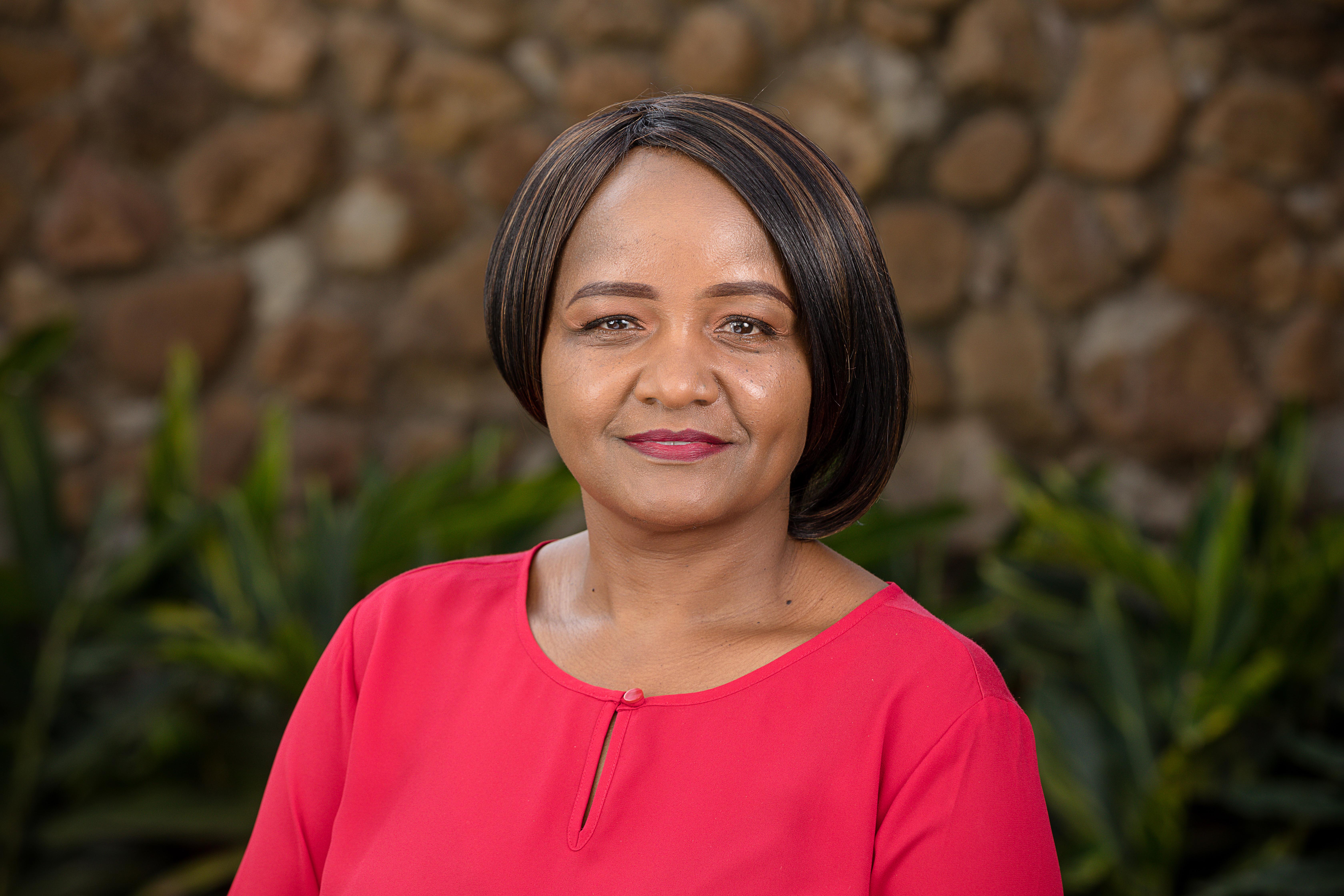
Grace Mukasa
Resource Mobilization Officer
Grace is a communications specialist with over 15 years’ working experience in diverse sectors including agriculture and health.
Prior to joining AATF, she worked as an independent consultant since May 2017 where she provided communications support including resource mobilization for both public and private sector clients. She previously worked with Merck Health Care and Life Sciences, Kenya as a Communications Manager from 2015 to 2017. Prior to that, she was the Corporate Communications Officer at AATF from 2011 to 2015 and the Project Communications Officer – WEMA Project from 2008 to 2011. She also served as the Publications Editor for the Institute of Policy & Research, Kenya from 2004 to 2008.
Grace holds an MA in Gender and Development and a Postgraduate Diploma in Mass Communications from the University of Nairobi and a BSc. Information Sciences from Moi University. Grace will be applying her knowledge and experience in communication to support AATF’s Resource Mobilization initiatives. Grace will double up as the AATF editor and provide administrative services to the AATF consultancy arm. Grace is a Kenyan national.

Prof. Garba Hamidu Sharubutu
Member, Board of Directors
Prof Garba Hamidu Sharubutu is the Executive Secretary of the Agricultural Research Council of Nigeria. He is a specialist in Infectious Diseases of Livestock and Veterinary Legislation. A Native of Kwande, Qua’an – Pan Local Government Area of Plateau State, Garba Sharubutu was born on June 19, 1961. He attended St. John Vianney’s Transferred Roman Catholic (RCM) Primary School, Kwande; Government Secondary School (G.S.S.) Shendam; and the Plateau State School of Preliminary Studies (SPS) in Keffi, Nassarawa State.
Hamidu Sharubutu obtained a Doctor of Veterinary Medicine (D.V.M) degree from Ahmadu Bello University (A.B.U), Zaria in 1986; a Masters of Veterinary Science (M.V.Sc) degree from the University of Ibadan in 1992; and a Ph.D. from Usman Dan Fodiyo University Sokoto in 2002.
Prof. Sharubutu began his public service career in the Federal Livestock Department that same year (1987), subsequently joining the services of Usmanu Dan Fodiyo University as Assistant Lecturer in 1991 and rose to the rank of a Professor in 2005. He held numerous positions including Complex Co-ordinator of City Campus Complex of the University; Chairman, ASUU UDUS branch; Dean Faculty of Veterinary medicine; and Chairman of many sensitive University Committees.
He has earned numerous awards including the Presidential National Youth Service Corp (NYSC) Honours in 1987 and nurtured many talents across the agricultural research sector. A seasoned professional, he is no novice in the academic, administrative and managerial sphere, and he is well published.
Prior to his appointment as the Executive Secretary on 16th April, 2020, he acted in that position between September 2019 – April, 2020. Prof. Sharubutu has also held several positions in the public sector including National President, Nigerian Veterinary Medical Association (2005 – 2009); President of Veterinary Council of Nigeria (2013 – 2017); Provost, Federal College of Animal Health and Production Technology, Vom (2014 – 2018). He is an alumnus of the National Institute for Policy and Strategic Studies, where he also served as the Monitor General of SEC 35, 2013.

Dorothy Onyango
Program Officer, RICE
Dorothy is a plant scientist who passionately believes in transforming hard science into a soft science that can improve lives of smallholder farmers. She is known to have a good balance between laboratory and field research in the areas of plant breeding, Genetics, plant molecular physiology, seed science, farmer researcher interaction through outreach activities and capacity building.
Before joining AATF, Dorothy worked with International Rice Research Institute (IRRI) as a seed system specialist consultant, conducting baseline survey aimed at understanding rice seed value chain in Kenya. She also worked with DryGro as the Director of Plant Science Kenya research where she improved the crude protein content of Lemna from 23% to 51%. Prior to this, Dorothy worked with DuPont Pioneer Kenya as a highland maize breeder developing maize hybrids for the highlands. Dorothy also worked as a capacity-building associate with International Livestock Research Institute where she successfully trained and co-supervised 12 PhD and 16 MSC ABCF fellows from East and Central Africa.
Dorothy worked with the International Potato Center (CIP) as an associate production systems manager where she ardently helped farmers of western Kenya to sustainably intensify and or diversify their production systems. Dorothy holds her PhD in Genetics and Plant Breeding from Maseno University Kenya. She conducted her PhD thesis research with the AfricaRice centre station in Tanzania and IRRI Los Banos in the Philippines. Dorothy holds MSc in Plant Genetics from University of Eldoret and BSC Botany from Moi University, both in Kenya. In addition, Dorothy holds a certificate in Biotechnology and Bioinformatics from the University of Nairobi. Apart from being a scientist, Dorothy is an award-winning agripreneur who worked end to end with smallholder farmers of western Kenya in innovating and integrating a groundnut biofertilizer winning FAPA AWARD. She is a Kenyan National.
As she joins AATF, she has keen interest in the implementation of the NEWEST and Hybrid Rice projects as well as AHyRA to ensure timely and high-quality delivery of activities and hopes to see rice farmers of Sub-Saharan Africa improve their yields through the use of certified hybrid rice seed as she works out post-harvest loss management in rice.

Alhaji Tejan-Cole
Director of Legal Affairs/Legal Counsel
Alhaji Tejan-Cole holds a LL.M degree in Legislative Drafting (including Constitutional/Administrative Law) from the University of the West Indies and a LL.M degree in Intellectual Property Law (including Competition Law) from the University of South Africa. He has served as Legislative Counsel in Sierra Leone and in the Caribbean nation of Belize.
In 2003, he was appointed as Deputy Registrar for Intellectual Property in Belize, a position which he held until his appointment with the African Agricultural Technology Foundation. Alhaji has also served as legislative drafting consultant for the World Intellectual Property Organization. In addition to legislative drafting and intellectual property management, his other areas of experience include contract drafting, technology transfer, corporate governance and legal compliance. He is a citizen of Sierra Leone.

Djimé Adoum
Member, Board of Directors
Djimé Adoum is the High Representative for the G5 Sahel Coalition. He has also served as the Executive Secretary of the Permanent Interstates Committee for Drought Control in the Sahel (CILSS) and former Minister of Agriculture and Irrigation of Chad. He has 25 years of professional experience in international development, especially in Sub-Saharan Africa. As an agronomist, Djimé has occupied various positions in the field of research, agricultural extension, communication and strategy in the design of development programs in several countries, from South Africa to Egypt through Senegal, Ethiopia, Kenya, Cameroon, USA and Chad. He has worked for international organizations such as the World Bank and USAID, as well as for research institutes and in the implementation of development strategies. Before his tenure as minister, he served as a technical advisor to President Idriss Deby Itno of Chad. He holds a graduate degree in Agronomy, specifically in crop production and statistics, and a PhD in agronomy and agricultural extension from the University of Maryland.

Sofia Tesfazion
Director Resource Mobilisation
Sofia Tesfazion holds a Master’s degree in International Business Administration and Economics from Uppsala University in Sweden and a Certificate in Change Leadership from Cornell University, USA. She has over 22 years of diverse experience in the private and development sectors from three continents, Europe, USA and Africa. Sofia started her career in SCA (Svenska Cellulosa Aktiebolaget) a multinational company headquartered in Sweden that produces and sells absorbent hygiene products, packaging solutions and publication papers. She then moved to New York working for Towers Perrin, a global professional services firm that helps organisations around the world optimise performance through effective people, and risk and financial management – servicing clients that include three-quarters of the world’s 500 largest companies and three quarters of the Fortune 1000 U.S. companies. Sofia has been based in Nairobi over the last 13 years in regional management roles in resource mobilization, program development and grant management for Save the Children and Plan International. Before joining AATF, she was the Regional Head of Resource Mobilisation for Plan International covering 12 countries in Eastern and Southern Africa. In AATF as Director Resource Mobilisation she provides strategic leadership in the area of resource mobilisation. Sofia is an Eritrean and Swedish national.

Kayode Abiola Sanni
Rice Project Manager
Kayode Abiola Sanni has over 20 years experience in agricultural research and development, science and technology, leadership in genetics, plant breeding, genetic resources and project management. He has greatly contributed to research towards food security in Africa through management of genetic resources, varietal development, registration, release and dissemination. Kayode holds a PhD in Plant Breeding from the Federal University of Agriculture, Abeokuta, Nigeria, an MSc in Environmental Genetics and a BSc in Agriculture (Soil Science) both from the University of Ibadan, Nigeria. His PhD work was focused on New Rice for Africa (NERICA) and he serverd as a Postdoctoral Fellow as molecular biologist at the Genetic Diversity and Improvement Program of Africa Rice Center (AfricaRice). Prior to joining AATF, Kayode was the Head of Genetic Resources Unit and the Coordinator of International Network for Genetic Evaluation of Rice in Africa (INGER-Africa) at AfricaRice, where he led and managed the collection, conservation and utilisation of rice genetic resources. He was the lead scientist for the international rice evaluation and varietal release program cutting across 30 African countries, which led to the registration and release of rice varieties in the different countries. Kayode served as the focal point of AfricaRice at several levels such as, the International Treaty on Plant Genetic Resources for Food and Agriculture and all issues relating to genetic biodiversity and Intellectual Property Rights. He took active part in multi-country donor-funded projects at AfricaRice. He also provided technical backstopping to national research scientists in Sub-Saharan Africa, and supervising post graduate students. He played a significant role in the establishment of varietal release system in the republic of Benin and was part of the committee that compiled the rice component of the first varietal catalogue of the country. Prior to that Kayode worked at the International Institute of Tropical Agriculture (IITA), Ibadan, Nigeria, in various capacities, firstly with the Maize Breeding Program and later with the Genetic Resources Center, where he worked on the Genetic profiling of three of the IITA mandate Crops. Kayode participates in the crop technical sub-committee of the National Varietal Release Committee of Nigeria as an international expert on rice. He has published heavily in scientific journals, conference papers, books and book chapters, posters, flyers, bulletins. As the Project Manager Rice, he provides overall leadership to the research and product development of the rice projects – translating strategic aims into achievable plans, establishing priorities, and ensuring the integration of technical, legal, communication, regulatory, and product deployment elements of the projects. Kayode is a national of Nigeria.
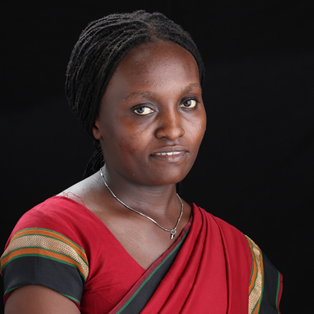
Millicent Sedi
Program Officer-Agribusiness Development
Millicent .A. Sedi holds a master’s degree in Agribusiness Management (Finance and Marketing option) from Kerala Agricultural University, India. She also holds a Bachelor of Science degree in Animal Production from Egerton University, Kenya.
Millicent Sedi is an agricultural value chain and market systems development expert with more than 8 years of progressively responsible experience in the management and implementation of food and agricultural development activities with smallholder farmers within the Kenyan context. She has a vast understanding of agricultural market systems and supporting private and public sector actors to invest in long term relationships with smallholder farmers for structured crop and dairy production.
She has worked as a Program Manager, PREG lead, Business Development Specialist, Business Advisor, sales executive for USAID, USDA, FORD Foundation and private firms funded programs. Millicent has wide experience in the agriculture sector that includes strategic management and leadership, financial analysis of businesses, financing, and market linkages, overseeing gender inclusivity and working with Communities on Journey to Self-Reliance. As a Program Officer-Agribusiness Development, Millicent is responsible for providing technical support on Agribusiness Development, Gender Mainstreaming, conducting baseline and feasibility studies, and drafting concept notes, business plans, market, and impact assessment for all AATF projects.

Peter Mugambi
Director, Corporate Services
Peter Mugambi holds an MBA from the University of Nairobi and professional accounting qualifications. Peter has extensive finance and operations experience, having worked at various international organizations for over fifteen years at different management levels. Before joining the AATF, he worked in Jhpiego Corporation as Finance and Administration Director, managing a substantial donor funding portfolio. Peter has also worked for CNFA, CARE International, Oxfam GB, and General Motors. He has provided specialist finance, operations, and compliance support to various organizations within Africa, Asia, and the Caribbean. Peter is an innovative problem solver and works to create motivated, agile and collaborative teams. Peter is a Kenyan national.
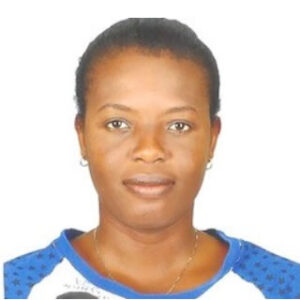
Ijeoma Akaogu
Program Officer- COWPEA
Ijeoma Akaogu is a seasoned scientist in plant breeding, genetics, and biotechnology with a good background in agronomy. She has over 10 years working experience across international and national organizations in Africa. Ijeoma holds a Ph.D. in Plant Breeding and Genetics from the West Africa Center for Crop Improvement (WACCI), University of Ghana, Legon Accra, M.Sc in Agronomy from the University of Ibadan, Oyo State, Nigeria, and B.Sc in Plant Science and Biotechnology from Imo State University, Owerri, Nigeria. She was one of the Alliance for a Green Revolution in Africa (AGRA) scholars for both her M.Sc and Ph.D degrees. Also, she was one of the 2016/2017 Norman Borlaug Leadership Enhancement in Agricultural Program (LEAP) fellows at Cornell University Ithaca New York where she conducted research on the identification of the quantitative trait loci (QTLs) for Striga hermonthica in tropical maize lines. Before joining AATF, Ijeoma worked at the National Biotechnology Development Agency Abuja (NABDA), an organization saddled with promoting and coordinating biotechnology products, research, and development in Nigeria. Prior to that, she worked with the International Institute of Tropical Agriculture (IITA) under the Maize improvement unit as a research fellow where she had developed and commercialized some maize varieties in West Africa. Ijeoma was also a visiting scientist in the Institute of Biotechnology at the Cornel University, Ithaca, New York, USA. She brings on board a blend of experience in Agricultural Research, Commercialization and varietal release, design of breeding experiments, regional and international trials management, food and nutrition security. She is the Program officer for the pod borer resistant (PBR) cowpea project at AATF. Ijeoma is a Nigerian national.

Moses Taiwo Ajireloja
Programme Officer- Seed Systems
Moses Taiwo Ajireloja is an excellent seed specialist with sound knowledge of seed production and seed systems, together with experience in promoting agricultural innovations (especially improved seed varieties) that can help smallholder farmers to become more productive, profitable, and sustainable. Moses holds a Master of Philosophy (M.Phil.) Degree in Seed Science and Technology, and a Bachelor of Agriculture (B.Agric.) Degree in Crop Production and Protection, both from Obafemi Awolowo University, Nigeria. He is also an alumnus of The SDG Academy where he participated in a comprehensive course on ‘Feeding a Hungry Planet: Agriculture, Nutrition, and Sustainability’. Moses also holds a Diploma in Computer Science, and he had been a participant in several online courses including project management, monitoring and evaluation, advocacy, and digital technology. Prior to joining AATF, Moses was the Coordinator and Lead Developer of the Nigerian Seed Portal Initiative where he was responsible for facilitating the development of the seed portal and promoting the adoption of improved seed varieties towards boosting agricultural productivity and improving the livelihoods of smallholder farmers. As a Programme Officer- Seed Systems at AATF, Moses is responsible for supporting the formulation and implementation of seed production strategies and plans, to facilitate effective and efficient product delivery, and seed systems components of projects. Moses is passionate about contributing to the realization of a prosperous and food-secure Africa where the livelihoods of smallholder farmers are transformed through innovative agricultural technologies that deliver results that increase farmers’ income, enhance food security, and improve nutrition. He is a Nigerian national.

Alex Abutu
Communications Officer-West & Central Africa
Augustine Abutu Alexander is a veteran science journalist with many years of practical experience covering agriculture, health, climate change, and development for various media platforms across Africa and the United Kingdom. Alex holds a Bachelor of Arts degree in Mass Communication from the Benue State University, Makurdi, and has just completed course works and dissertation for the award of a master’s degree in development communication from the Nasarawa State University, Keffi (Award of degree awaited). Prior to joining AATF, Alex was Editor, Agriculture, and Environment Desk at the Daily Trust newspaper, Abuja. In 2009, Alex was honored by the World Federation of Science Journalists as one of the four journalists that changed the world with their investigative reporting. He was coordinator, Biosciences for Farming in Africa, media consultant to the Program for Biosafety Systems, and media adviser to Nigeria’s former Minister of Science and Technology. He was also previously involved in the training of scientists on how to communicate their research findings as well as training and mentoring of science journalists across Africa. Alex is a national of Nigeria.

Vitumbiko Chinoko
Project Manager -OFAB PROJECT
Vitumbiko Chinoko holds a Bachelor of Education – Science (BEd.Sc) (Spatial Development and Physical Geography), from Chancellor College of the University of Malawi and a Master of Business Administration (MBA) with majors in Corporate Strategy and International Business from the Management College of Southern Africa (MANCOSA), in Durban, South Africa.
He is an accomplished rural development specialist, campaigner and advocate with over 10 years of working with communities on climate adaptation and mitigation and influencing global, regional and national policy and practice on climate change and sustainable socio-economic development.
While at Christian Aid, he commissioned the country’s inaugural budget analysis on climate change to determine Government of Malawi’s commitment to climate change adaptation and disaster risk management. The report was instrumental in raising awareness on climate change and facilitated evidence-based engagement with Members of Parliament (MPs), the Executive and technocrats on the need increase investment in climate change through the national budget. He previously, worked with ACT Alliance, where he coordinated an international climate change policy influencing strategy and designed and implemented a global campaign to influence a pro-poor outcome on climate change adaptation, loss and damage, climate finance and emissions reductions from the historic the Paris Climate Conference in 2015.
Before joining AATF Vitumbiko worked for CARE USA, where he coordinated a CARE USA investment opportunity; Impact Growth Strategy (IGS), an advocacy and influencing programme for Southern Africa on Food Security, Nutrition and Climate Change. At CARE USA, Vitumbiko developed a Pan-African Advocacy and Influencing Strategy that focused at influencing Governments to implement the Malabo Declaration on Accelerated Agricultural Growth And Transformation for Shared Prosperity And Improved Livelihoods’s Commitments on Food Security, Nutrition and Climate Change as expressed in their respective National Agriculture Investments Plans (NAIPs). He facilitated the establishment of East and Southern Africa CSO SUN Network and coordinated the development of the first ever Nutrition Investment Report by 9 selected Governments in East and Southern Africa. He also established the Southern Africa Climate Smart Alliance (SACSA) under the Africa Climate Smart Agriculture Alliance (ACSAA).
Vitumbiko is a member of CAADP Non-State Actors Coalition (CNC), a CSO platform that coordinates all advocacy and influencing on CAADP to the African Union (AU)/NEPAD. In CNC Vitumbiko co-chairs the Food Security Technical Working Group. He is a CSO member of the High Level Panel of InsuResilience Global Partnership (IGP) where he co-chairs the Gender Working Group with the Government of Canada.
Vitumbiko is an experienced climate change negotiator and has supported the Malawi Government Delegation to the UNFCCC to negotiate Agriculture, Climate Finance, adaptation and loss and damage at the UNFCCC since 2012. Vitumbiko is Malawian.

George Achia
Communications Officer-East and Southern Africa
George is a Communications, Public Relations (PR) and Media professional with over eight years’ of experience in corporate communications, media relations, developing and implementing communications strategies, media, development of IEC materials, content development, media training, event planning & management and stakeholder & influencers relations. George holds a Bachelor of Arts Degree in Linguistics and Literary Studies from Moi University and is currently pursuing his Master of Arts Degree in Communication Studies (Strategic Communication) from the University of Nairobi. Before joining AATF, George worked with different Communications & PR Firms including Apex Porter Novelli (APN) and Chatter Media Africa as an Account Manager where he helped manage communications and PR functions for the corporate clients. Further, he handled the day-to-day PR activities for the clients including media relations and advocacy, corporate positioning, stakeholder relations, event management as well as act as the client-service lead for the accounts. He conceptualized and implemented different campaigns and media relations activities for the clients under intertwined strategies that helped the clients achieve their communications/organizational objectives. Before that, he worked as a science journalist reporting on different aspects of Science, Technology, and Innovation for different science publications such as ScienceAfrica and SciDev.Net – all focusing in bringing science, development and policy issues together through news and analysis in Sub-Saharan Africa. As the Communications Officer – East and Southern African, George is responsible for enhancing the visibility of AATF in the media, promoting the brand and its projects among target audiences in and outside Africa. George is a Kenyan national.

Cecilia Limera
Programme Officer – Programme Development and Commercialisation (PDC)
Cecilia Limera is a plant biotechnologist with additional experience in molecular breeding and agronomy. Cecilia holds a PhD in agricultural, environmental, and food sciences with a specialisation in plant biotechnology from Universita Politecnica delle Marche, Italy; she did part of her research at the University of Wyoming, USA. She also holds an MSc. in horticulture with a specialisation in vegetable genetics and molecular breeding from Nanjing Agricultural University, China and a Bsc. in horticulture from Egerton University. Cecilia’s accomplishment in scientific communication has been demonstrated through her publication record culminating into over 17 peer-reviewed papers, conference papers, and book chapters. Before joining AATF, Cecilia was a postdoc research fellow at Universita Politecnica delle Marche in Mezzetti’s plant biotechnology laboratory, responsible for research in organogenesis, somatic embryogenesis, and genetic engineering techniques. She also participated in proposals writing and training of undergraduate and masters students in plant biotechnology techniques. Previously, Cecilia worked for Canken International Company as chief agronomist responsible for the coordination of agronomists’ activities and training, budget preparations, and farmer consultations. Cecilia also worked for Technoserve coffee initiative as a business advisor intern with a responsibility for training coffee farmers on GAP and GPP. As a Programme Officer in the Programme Development and Commercialisation (PDC), Cecilia is responsible for the coordination and submission of technical reports, preparation of project documents, annual project budget reviews, project status reports and participation in project review meetings. Cecilia is a Kenyan national.

Howard Okiror
Legal Officer
Howard Okiror, an Advocate of the High Court of Kenya, holds a Bachelors of Law (LLB) from the Catholic University of Eastern Africa (CUEA), a Post Graduate Diploma in Law from the Kenya School of Law, a Master’s Degree in Intellectual Property from the African University (WIPO/ARIPO Academy) Zimbabwe, several professional certificates on Intellectual Property issued by WIPO Academy and is currently finalising on his Master of Business Administration at CUEA. Prior to joining AATF he worked at the Kenya Copyright Board, a state corporation under the Office of the Attorney General and Department of Justice (Kenya), as a Legal Counsel and Copyright Prosecutor where he was involved in advising government and training the public on issues surrounding copyright and related rights, and also conducted prosecution for copyright infringement cases. Prior to joining government, Howard worked as a commercial and litigation lawyer with the firms of Yunis Mohammed & Associates and Muriithi & Ndonye Advocates respectively. At AATF, Howard is responsible for managing the AATF Contract Lifecycle Management System, negotiating, drafting and management of license agreements for technology development and deployment; facilitating and coordinating the filing of project and institutional intellectual property rights, updating and maintaining the intranet board folder, assisting the Director of Legal Affairs with corporate compliance functions; organising and facilitating project intellectual property meetings; assisting the Director of Legal Affairs in managing the AATF Technology and Innovation Support Centre; and assisting in intellectual property trainings for AATF and other partners. Howard is a national of Kenya.
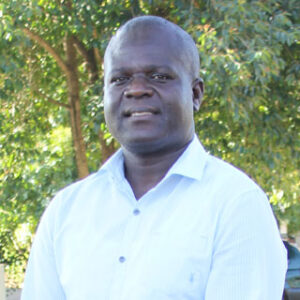
Stephen Obunga
Accountant
Stephen Obunga holds Bachelor of Commerce (First Class Honours) degree from KCA University. He is a Certified Public Accountant of Kenya and has vast working experience in donor financial reporting, budgeting and forecasting, preparation of year end accounts, management accounting and reporting, variance analysis, preparation of audit papers, administration, cash flow management, compliance reviews and internal control systems monitoring. Prior to joining AATF he worked at DAI Global LLC as Senior Accountant for the East Africa Trade & Investment Hub Project, at CIP as Finance and Admin Officer and at ActionAid International as Finance & Admin Assistant. As the Accountant, his work is to provide support in the execution of financial services of AATF projects and other institutional activities ensuring effective and transparent utilisation of financial resources and integrity of financial services, ensure promotion of a client-oriented approach consistent with AATF rules and regulations and prepare and maintain accurate, timely, complete and reliable periodical financial reports and ensure that all financial transactions comply with set organisation policies and procedures as well as development partners’ regulations. Stephen is a Kenyan national.

Paul Oni Owolabi
Associate Administrative and Finance Officer
Paul Oni Owolabi is an Associate Member of the Institute of Chartered Accountants of Nigeria (ACA) and an Associate Member of the Institute of Strategic Management of Nigeria (ASM). He holds a B.Sc. Accounting (Second-class Honors) degree from the University of Benin and is currently pursuing an MBA (finance option) degree from Patten University, Oakland, California. Prior to Joining AATF, he worked as an Accountant at Sterling Travels and Tours Limited, Private Networks Nigeria (PNN GROUP), and OneCard TopUp Services Limited. Paul’s experience spans the travel and tourism industry, telecommunication and fast moving consumer goods. As Associate Administrative and Finance Officer, he is responsible for the day-to-day finance functions, project finance activities for West Africa, tax and payroll management, West Africa sub-grantee financial review, travel management, procurement, general administration and basic human resource services in the Nigeria Country office. Paul is a Nigerian national.

Simeon Eze
Driver, Abuja Office
Simeon Eze has been competently trained in Defensive and Advanced Driving and is currently undertaking a Bachelor’s degree in Political Science at the National Open University of Nigeria. Before joining AATF, he worked with the Canadian International Development Agency Program and the Castle and Towers Guards. Simeon has over 20 years’ experience in protocol, transportation and logistics. At AATF, he is responsible for administrative, transportation and logistics support. Eze is a national of Nigeria.
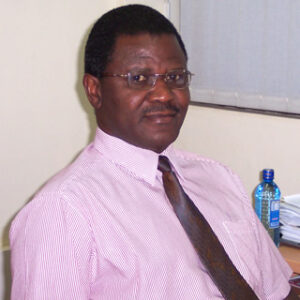
Francis Nang’ayo
Senior Manager, Regulatory Matters
Francis Nang’ayo, an Applied Ecologist and leading expert on biosafety and regulatory affairs, holds a B.Sc. (Hons) degree in Biological Sciences (University of Nairobi, Kenya), an M.Sc. degree in Environmental Biology (University of Guelph, Canada) and a Ph.D. degree in Applied Ecology (Imperial College, University of London). Additionally, he holds a postgraduate diploma in Crop Protection from Imperial College, London. His career as a scientist begun at the Kenya Agricultural and Livestock Research Organisation (KALRO) where he worked for close to 20 years rising through the ranks of Research Officer, Senior Research Officer, Principal Research Officer and Deputy Director of the Biotechnology Research Centre in Nairobi. He was later appointed General Manager in charge of Phytosanitary Services, Biosafety, and Quarantine Affairs at the Kenya Plant Health Inspectorate Service (KEPHIS) before progressing to his current appointment at AATF of Senior Manager and Head of Regulatory Affairs in 2005. He is responsible for securing regulatory approval authorisations for testing and deployment of agricultural technologies including ensuring compliance with regulatory requirements of target countries for AATF projects. Francis is a member of many professional societies including the Entomological Society of Kenya (ESK); the African Crop Science Society, the African Association of Insect Scientists (AAIS), the Public Research and Regulation Forum, the African Biotechnology Stakeholders Forum (ABSF) and the Common Market for Eastern and Southern Africa (COMESA) Expert Panel on Biotechnology and Biosafety, to name a few. Previously, Francis served as Member of the Kenya Standing Technical Committee on Imports and Exports (KSTCIE), the National Biosafety Committee (NBC) of Kenya, Institutional Biosafety Committee of KALRO and the Executive Committee of the Inter-African Phytosanitary Council of the African Union (IAPSAC). Francis has authored many publications. He has participated as a panelist on many TV talk shows on the safe utilisation of modern biotechnology and delivered several presentations on the same topic including Key Note addresses at professional, university and industry meetings at international and regional levels. Francis is a Kenyan.

Munyaradzi Jonga
Seeds Production Manager
Munyaradzi Jonga is an agronomist and seed production specialist with vast experience in agriculture and the seed sector, and a passion for seed sector development and management. He holds BSc and MSc degrees in Crop Science as well as an MBA from the University of Zimbabwe. He has a Diploma in Marketing, Research Methods for Agronomists and has undertaken a Management Development course at the University of Cape Town as well as various courses on quality assurance and auditing of quality management systems. Munyaradzi got agricultural research and extension experience working in the fertiliser, crop chemicals and seed industries, where he gained understanding of various farming systems both in the smallholder and large scale farming sectors. He has worked as a Gazetted Seed Inspector, Seed Production & Quality Assurance Manager and Operations Manager for Seed Co Ltd. These appointments allowed Munyaradzi to participate in critical panels, committees, associations and seed systems networks dealing with seed production development and administration in Zimbabwe, Eastern and Southern Africa. Munyaradzi has contributed to agriculture and seed sector development through training of seed growers and seed industry personnel during formal workshop presentations and field training in east and southern African. During his tenure at Seed Co Ltd, he developed a practical seed production manual – “Maize Seed Production Manual 2002” – to assist upcoming seed growers and seed production personnel and supervised many internship students from various colleges and universities. Munyaradzi is a national of Zimbabwe.

Arnold Ntulume Mbowa
Project Officer, Partnership for Africa Seed Technology Transfer Activity (PASTTA)
A trained agriculturalist with five years of experience in Seed production, product development, marketing and extension. He has built a career around expanding access to improved varieties of crops by farmers (both small holders and commercial) with roles in seed production, marketing and extension. Before joining AATF, Arnold worked as a product development agronomist at East African Seed (U) limited; as a team leader – Farmers’ Resource Centre at MWH foundation and a Sales and Marketing manager at Rhino Seeds (U) limited. He is an agricultural and development worker with cross-functional competences in seed production, testing and marketing as well as community mobilization and climate smart agricultural technologies. Arnold holds a Bachelor of Science degree in Agriculture from Makerere University college of Agricultural science and a certificate in project management and planning. At AATF, Arnold is the project officer for PASTTA project in Uganda responsible for overseeing all project work in Uganda and ensuring that activities are implemented as planned. Arnold is Ugandan

Issoufou Kollo Abdourhamane
Cowpea Project Manager
Issoufou Kollo Abdourhamane holds a Doctorate degree in Plant Pathology from Texas A&M University, USA; a Master’s in Plant Pathology and Bachelors in Plant Protection from Purdue University, Indiana, USA. Before joining AATF, Issoufou worked for the West and Central African Council for Agricultural Research and Development CORAF/WECARD) where he was the Coordinator for the Australian Agency for International Development (AusAID) Part

Monica Ndoria
Regional Advocacy Coordinator – TELA
Monica Ndoria has over 10 years’ experience in program leadership across Africa and Asia. She holds an MSC degree in Development Management from Open University (UK), an MBA degree in Strategic Management from Daystar University (Kenya), a BSC Accounting degree from the Oxford Brookes University (UK), a certificate in project leadership from the Cornell University (USA) and project management certification through the Project Management for Development Professionals (PMDPro I&II) from LINGOs. Key areas of work include multi-country project coordination, advocacy and policy engagement including capacitating vulnerable and at-risk populations to engage in policy processes around biotechnology, health systems strengthening and HIV/AIDS. Prior to joining AATF, she worked with the Catholic Relief Services East African Regional office as a Senior Program Coordinator where she worked with civil society organisations across Africa and Asia through on-site and virtual technical assistance to set up platforms/networks and strengthened them to coordinate consistent engagement of CSOs in national health sector planning and policy processes. She has supported development of communication and strategic plans, including providing learning platforms that have promoted peer learning and strategic partnerships with development partners, academia and government ministries. She is trained in evidence-based advocacy; skills that have been critical in informing her mentorship to countries. At AATF, Monica coordinates the regional advocacy portfolio for the TELA project that is implemented in six countries. In this role, she works with national agricultural research centers in Sub-Saharan Africa to develop and implement effective outreach and policy advocacy strategies that seek to create an enabling environment for evidence-based policy making in agriculture. Monica is a Kenyan national.
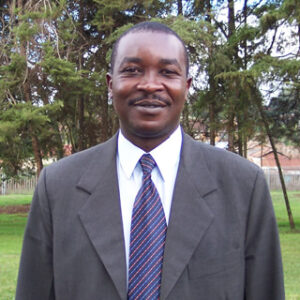
Gordon Ogutu
Protocal/Liaison Assistant
Gordon Ogutu holds an “O” level certificate and a Grade III Motor Vehicle Mechanic certificate. Before joining AATF, he worked as Liaison Assistant for six years at the International Livestock Research Institute (ILRI), Clerk/Driver for four years at the African Academy of Sciences (AAS), Clerk/Driver for the Smallholder Dairy Project for one year and as Purchasing Assistant/Driver for one year at Sacross Agencies. Gordon is a national of Kenya.

George Marechera
Agribusiness Development Manager
George Marechera holds an MBA from Wolverhampton University, UK, a Bsc Honours degree from University of Zimbabwe and several professional management qualifications. Before joining AATF he worked as General Manager for Saltlakes Holdings (Zimbabwe) spearheading tobacco contract farming which targeted smallholder farmers; Makita Manufacturing (UK) as General Manager responsible for operations; Simmonsigns Pvt Ltd (UK) as a General Manager, where he was involved in business management, strategy and human resources management; the Ministry of Lands, Agriculture and Rural Resettlement in Zimbabwe as an Economist and later as a Senior Economist responsible for project administration and finance directly involved in the management of agricultural projects funded by the Government and donors including European Union, World Bank, United States Agency for International Development (USAID), United Kingdom Department for International Development (DFID) and Japanese Aid. By the time he left the Ministry, he was the Executive Assistant to the Permanent Secretary of the Ministry responsible for change management, commercialisation and subcontracting initiatives. During his tenure at the Ministry, he also worked as a part time lecturer in economics and business management. George has worked in the agricultural industry and has wide experience in project and agri-business management, business strategy, business consultancy, marketing management, change management, economic development and regeneration. He has proven leadership skills in managing, developing and motivating teams. As Agri-business Specialist, George is responsible for co-ordinating and facilitating business initiatives between the AATF, agro-industry, smallholder farmers and all stakeholders in the agricultural industry to ensure appropriate knowledge is disseminated for effective and efficient service delivery. George Marechera is a Zimbabwean national.

Sylvester Oikeh
WEMA Project Manager
Sylvester O. Oikeh has more than 18 years of interdisciplinary experience in research and development projects on natural resources and crop management, and plant nutrition. He joined AATF from the Africa Rice Centre, WARDA, where he worked for five years, rising to the position of a Principal Scientist/Soil Fertility Agronomist and Project Leader. As a Principal Scientist, Sylvester’s key duties included conducting strategic and applied research on integrated soil fertility management and plant nutrition to improve natural resources management and increase rice production in smallholder farming systems. He took part in multi-country donor-funded projects, backstopping national research systems scientists in west and eastern Africa, and supervising doctoral students, among other duties. Between 1990 and 2003, Sylvester held various positions at the International Institute of Tropical Agriculture (IITA), including as a GTZ Research Fellow, a consultant agronomist, and a visiting maize scientist involved in collaborative research investigating micronutrient enhancement of tropical maize. In 2001, he was a Postdoctoral Fellow at Cornell University’s USDA Plant, Soil and Nutrition Lab at Ithaca, New York, USA. Sylvester attained his doctorate in Soil Science specialising in Soil Fertility and Plant Nutrition from the Ahmadu Bello University, Nigeria, in 1996. He obtained a Masters degree in Crop Science from the University of Nigeria, Nssuka, the same university from where he had graduated with a Bachelor of Agriculture degree in Horticulture. Sylvester holds a Postgraduate Diploma in Irrigation Engineering from the Centre for Irrigation Engineering of the Katholieke universiteit, Leuven, Belgium. Besides research, he has lectured in Nigeria at the University of Benin (Soil Science) and Anambra State College of Education (Crop Production, Horticulture and Agricultural Economics). Sylvester is a national of Nigeria.
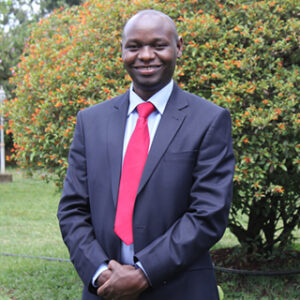
Daniel Kyalo Willy
Programme Officer, TAAT Policy Enabler
Daniel Kyalo Willy is an accomplished agricultural economist with over 15 cumulative years of passionately working with smallholder farmers, particularly in designing and implementing inter-disciplinary agricultural research projects, household and market surveys and quantitative/qualitative data analysis. His research has mainly focused on sustainable agricultural intensification and productivity, technology adoption and transfer, impact assessment of agricultural technologies, institutional economic aspects of agriculture, agri-environmental interactions and agricultural value chains assessment. Daniel holds a Bsc. in Agricultural Economics (Egerton), an MSc. in Agricultural and Applied Economics (Egerton) and a PhD in Agricultural and Resource Economics (Bonn). Daniel’s accomplishment in scientific communication has been demonstrated through his publication record culminating into over 30 peer reviewed papers, conference papers, working papers, policy briefs and technical papers. Before joining AATF, Daniel was a lecturer and researcher at the department of Agricultural Economics, Kenyatta University. Previously, he was a Post-doc research fellow at the Institute for Food and Resource Economics, University of Bonn-Germany, a research assistant at Tegemeo Institute of Agricultural Policy and Development, technical assistant at AATF, and a graduate research assistant at both Egerton University and University of Bonn. Daniel has been instrumental in conducting research to support agricultural policy reforms in Africa such as reforms on land policies, agro-input marketing and input subsidies in Kenya, wetland resources management in Uganda, Tanzania and Rwanda, among others. He has successfully supervised to graduation 12 MSc. students. Daniel held several administrative responsibilities at Kenyatta University at both school/faculty and departmental level. He is a member of the African Association of Agricultural Economists (AAAE) and has consulted for the National Research Fund (NRF) – Kenya, Solidaridad East and Central Africa, BOKU University – Austria, and Michigan State University. As TAAT Policy Enabler Programme Officer, Daniel is responsible for implementing activities within the program towards facilitating the creation of an enabling environment for efficient deployment of high impact agricultural technologies in 9 value chains across over 20 countries in Sub-Saharan Africa. His work includes policy analysis to identify policy, regulatory and institutional related bottlenecks on seed systems, agricultural input and output markets; engaging policy makers and other relevant stakeholders to facilitate the elimination of these bottlenecks and administrative responsibilities related to project planning and fiduciary activities. Daniel is a Kenyan national.
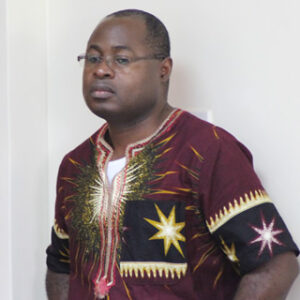
Caleb Obunyali
Programme Officer WEMA
Caleb Obunyali, a seed scientist, holds a BSc in Botany and a Master of Philosophy (MPhiL.) in Seed Science and Technology both from Moi University. Prior to joining AATF he worked as an Inspector at the Kenya Plant Health Inspectorate Service (KEPHIS) in seed certification and plant variety testing and protection. Before joining KEPHIS, he worked at the East African Herbarium Department, National Museums of Kenya, as a Research Fellow in Plant Taxonomy and Biodiversity Conservation, and on the Seed for Life Project as an Assistant Project Officer. As Programme Officer for the Water Efficiency Maize for Africa (WEMA) project, Caleb is responsible for supporting the development and implementation of product delivery strategies, seed production, product deployment and quality management in target countries. Caleb is Kenyan.

Fredah Nyaga
Accountant
Fredah Nyaga holds a Bachelor of Commerce (Finance option) degree from the Catholic University of Eastern Africa (CUEA) and is a Certified Public Accountant of Kenya. She is a registered member of the Institute of Certified Public Accountants of Kenya (ICPAK) and the Association of Women Accountants in Kenya (AWAK). Before Joining AATF, Fredah worked at Micro Enterprises Support Programme Trust (MESPT) as a Senior Finance Officer. Previously she worked at Business Services Market Development Project (BSMDP) as a Project Finance Officer, at Tacco Consultants as Audit Assistant, and at Comtec Group Ltd as an Accounts Assistant. As an Accountant at AATF, Fredah is responsible for providing support in the execution of financial services for AATF projects and other institutional activities by ensuring integrity, effectiveness and transparent utilisation of financial resources. This includes, but is not limited to, preparation and maintenance of accurate, timely, complete and reliable periodical financial and management reports that comply with set company policies and procedures as well as development partners’ regulations. Fredah is a Kenyan national.

Edith Kouko
Project Officer Rice
Edith Kouko holds a B.Sc. degree in Agriculture (honors) from the University of Nairobi, Kenya (with plant breeding, and quantitative and population genetics being some of her best performed units) and an M.Sc. degree in Agriculture from Yamagata University, Japan, with her thesis based on dissemination of New Rice for Africa (NERICA) in Western Kenya. Before joining AATF, she served as a Sub County Crops Development Officer (Nambale and Butula Sub Counties) and a Sub County Agribusiness Development Officer (Butula and Samia Sub Counties) in the State Department of Agriculture in Busia County for seven years. Her duties included coordination of implementation of agribusiness and crop related programmes and projects in Busia County such as National Accelerated Agricultural Inputs Access Programme (NAAIAP), Kenya Agricultural Productivity and Agribusiness Project (KAPAP) and Programme for Agriculture and Livelihoods in Western Communities (PALWECO), preparation and implementation of work plans and budgets, compilation of sectional reports, linking farmers to markets and input suppliers and interacting closely with stakeholders along agricultural value chains with the aim of supporting small scale producers achieve food security and raise their household incomes. Edith was also involved in the New Rice for Africa (NERICA) Dissemination Programme in Busia County. As Programme Assistant in the Department of Technical Operations, Edith is responsible for the coordination and submission of technical reports, preparation of project documents, annual project budget reviews, project status reports and participation in project review meetings. Edith is a Kenyan national.

Caroline Thande
Administrative Assistant
Caroline M Thande has training in Business Management, Secretarial and on various computer packages. Before joining AATF, she worked for CARE International in Somalia, based in Nairobi, for 15 years in various capacities. Before her departure, she was the Administration Assistant cum Executive Secretary to the Country Director and the Assistant Country Director. Prior to CARE, she worked with Catholic Brothers of St Charles Lwanga as secretary cum receptionist. Caroline is a Kenyan National.
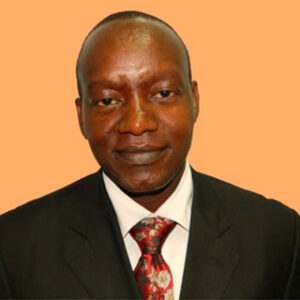
Abed Mathagu
Programme Officer, Regulatory Affairs
Abed Mathagu holds a Bsc. degree in Forestry from Moi University in Kenya, a Msc. degree in Plant Pathology from the University of Nairobi in Kenya and a Master’s degree in Biosafety from the University of Ancona in Italy. He is currently enrolled for a PhD program at Jomo Kenyatta University in Kenya. Before joining AATF, Abed was acting as the General Manager for Phytosanitary and Biosafety Services at the Kenya Plant Health Inspectorate Service (KEPHIS). He served in the National Biosafety Authority Board between 2010 and September 2014 as well as in its predecessor, the National Biosafety Committee from 2005 to 2009. Abed participated in the development of Kenya’s Biosafety Act and Regulations as well as in different institutional biosafety committees, including those of the International Livestock Research Institute (ILRI), the Kenya Agricultural Research Institute (KARI) and the International Centre of Insect Physiology and Ecology (ICIPE). He participated in the Codex Alimentarius Commission’s Committee on Genetically Modified Food Labelling and Ad Hoc Intergovernmental Taskforce on Foods Derived from Biotechnology which developed the Codex Plant Guideline for GM Risk Assessment. Abed chaired the Technical Committee on Biotechnology at the Kenya Bureau of Standards from 2009 to September 2014. He has wide experience in regulatory work. As Programme Officer, Regulatory Affairs, Abed is charged with coordinating planning, implementing and monitoring of WEMA regulatory activities to secure permit approvals and ensure compliance with regulatory requirements in partner countries. He is a citizen of Kenya.

George Agyemang Sarpong
Member, Board of Trustees
George Agyemang Sarpong is the Managing Partner of G.A. Sarpong & Co., Legal Practitioners and Consultants, Accra, Ghana; and a former Director of the Ghana School of Law. His specialist areas include Law of the Sea, Biotechnology, Land Use Planning and Mining. George is an alumnus of the Faculty of Law University of Ghana (LL.B. – 1981); the Ghana School of Law (B.L. – 1983); the University of British Columbia (LL.M. International Law – 1984); and the University of London School of Oriental and African Studies (LL.M. – Environmental Law, Occasional Student – 1995). He has been the recipient of many awards, fellowships and visiting scholarships, including from the UN (Human Rights Studies, Geneva and Strasbourg) and the Universities of British Columbia, Leiden, Nottingham, Queens (Belfast) and North-Western (United States).
George entered academia after a career in the Ghana Armed Forces. He trained at the Ghana Military Academy and the Combat Arms School CFB Gagetown, New Brunswick (Canada). He was commissioned into the Recce Regiment of the Ghana Armed Forces in 1973, and served in various capacities including Squadron Leader, 3 Squadron, Recce Regiment and Administrator at the Legal Services Directorate of the Ghana Armed Forces. He was a member of the Commission of Enquiry into the Organisational Structure of the Ghana Armed Forces (General Erskine Commission) in 1987-1989; and an Adjunct Lecturer of the Law of the Sea at the Ghana Armed Forces Command and Staff College. He honourably retired with the rank of Major in 1990.
George joined the Faculty of Law, University of Ghana in 1990. He served for 16 years during which period he taught Public International Law, Law of Contract, Business and Environmental Laws. He also served on several boards and committees of the university. He has published extensively in local and international journals on Public International and Environmental Law and attended several training programmes and conferences in his areas of expertise. He has also been involved in several initiatives as legal consultant to the Government of Ghana, UN bodies and international agencies in the implementation of projects, programmes and policies on sustainable development in several sectors including irrigation, fisheries, wetlands, land use planning, biodiversity, biotechnology, mining, plant health, environmental health and food safety.
George is a member of the Ghana Bar. He was a member of the African Union’s High-Level African Panel on Modern Biotechnology that provided a blueprint for biotechnology in Africa. He is currently a member of the World Commission on Environmental Law (WCEL) of the International Union for Conservation of Nature (IUCN).

Sylvia Horemans
Member, Board of Trustees
Sylvia possesses over 20 years management experience having worked across diverse sectors comprising parastatal and private companies. She holds a higher Diploma in Project Management from Cambridge University and various Diplomas in Personnel Management and Industrial Relations, Business Management and Administration, Sales and Marketing, and Certificates in Plant Breeding, Seed Production and Agribusiness.
Sylvia joined Kamano Seed in 2004 and rose from Marketing Director to the position of Chief Executive Officer/share holder. She has attended Seed Breeding training in Sweden and Sri Lanka and is affiliated to Making Markets Matter which has exposed her to a lot of international businesses. She is also a committee member of Zambia Seed Traders Association.
Due to her hard work and determination, Kamano Seed was awarded 1st prize for having marketed and sold the highest volume of orange maize seed under HarvestPlus/Ag Result. Sylvia has passion for women and youth and is always trying to better their lives. She has continued to play a big role in Zambia by making sure that the small holder farmers are well taken care of through food security.

Jessica Fransisca Colaco
Jessica Francisca Colaço is the co-founder and VP of Growth and Success at Brave Venture Labs based in Nairobi, London and San Francisco. Brave is a HR tech company sourcing and matching talent to companies looking to build product teams. She co-founded the iHub with Erik Hersman in 2010 and served in various leadership positions – she was the Director of Partnerships and Community at iHub, the Founding Manager between 2010 and 2011 at iHub and Research Director between 2011 and 2013 at iHub Research.
Jessica also co-founded WMIAfrica and AkiraChix. She was the ISOC-Kenya Chapter Treasurer in 2014, ACM-W Nairobi Chapter Chair 2014, TED Global Fellow 2009 and Bass Guitarist with her band Bass ii IV. She was part of the DFID’s Digital Advisory Panel team as a member and advisor in 2015.
Jessica holds a Master’s degree in Applied Computing and a BSc in Computer Science, both from the University of Nairobi. She is an Ambassador at blackbox.vc, a Public Speaker, MC, Director at Valuraha Group Ltd, Advisor at Ma3Route, and a Startup and Tech Evangelist.
Jessica is a recipient of various honors and awards, including 1st Place – Robotics Community Challenge – AFRON in 2014, Top 40 women under 40 in Kenya in Tech and Business in 2012, 2011, and 2009, TED Global Fellow 2009, 100 Most Influential Young Kenyans in 2016, 100 Most Influential Young Africans in 2017, and Top 100 iHub Community Member.

Noble Banadda
Member, Board of Trustees
Noble Banadda earned his Doctorate degree in chemical engineering at Katholieke Universiteit Leuven in Belgium. He also had postdoctoral professional training at Massachusetts Institute of Technology (MIT).
Noble is a Professor of Biosystems Engineering at Makerere University and his area of research is bioprocessing engineering specifically mathematic modeling of biological systems and interactions. He led the team that pioneered the first ever farmer-based low-cost multiple purpose vehicle in Uganda.
In 2013, Noble was inaugurated as the youngest fellow of Uganda National Academy of Sciences. In 2015, he was honoured as a young scientist at the World Economic Forum in Dalian, China, and in November 2018, he was selected as the winner of the 2018 Pius XI Medal Award which is a global award given every two years by the Pontifical Academy of Sciences to a scientist under the age of 45, who has conducted and shown exceptional promise in scientific research. He is the first African to receive this award since it was established in 1961.

Dahlia Garwe
Member, Board of Trustees
Dahlia holds a PhD in Molecular Biology from the University of Cape Town and an MSc degree in Biotechnology from the University of Zimbabwe as well as a BSc (Hon) degree in Biochemistry from the same University. Additionally, she has completed an Executive Diploma in Business Leadership.
Dahlia rose through the ranks and is currently the General Manager of the Tobacco Research Board having worked for the Research Board in various capacities since 1991. Although her primary qualification is Molecular Biology, Dahlia has since been exposed to management at senior level and the implementation of Quality Management Systems.
She is a Fellow of the Zimbabwe Academy of Sciences. Dahlia joined the Seed Co Limited Board in February 2011 and also sits on the Boards of a number of diverse companies and institutions.

Hamadi Iddi Boga
Member, Board of Trustees
Prof. Hamadi Iddi Boga is the Principal Secretary of the State Department for Agricultural Research in the Ministry of Agriculture, Livestock, Fisheries and Irrigation in the Government of Kenya. He is the former founding Principal of Taita Taveta University and was its Vice Chancellor between 2007 and 2017. He was a Professor in the Department of Botany at the Jomo Kenyatta University of Agriculture and Technology. His skills and interests are in biology, agricultural science, sequencing, microbiology, molecular biological techniques and RNA genes. He also has an interest in microbial ecology of insects’ guts, soils and soda lakes and has worked with termites, the soda lakes of Kenya, mangrove swamps, agricultural and forest soils and also on Mount Kenya glacier. He has a PhD in Biology from Universität Konstanz in Germany.

Nancy Muchiri
Senior Manager, Communications and Partnerships
Nancy Muchiri is a public relations practitioner with an MSc in Organisational Development from the United States International University, Kenya; a BA from the University of Nairobi; and a postgraduate diploma in Mass Communications from the same university. She has also attended the Diploma in Management course at the Kenya Institute of Management, Nairobi. Before joining AATF, Nancy worked with the SOS Children’s Villages, an international child welfare organisation where she established and headed the fundraising and communications department for three years. Prior to that, she worked with the East African Portland Cement Company Ltd as head of the public relations section for eleven years, providing corporate and product communications leadership. Nancy is responsible for managing the Foundation’s public and partnership relationships through strategic communications to enhance visibility and positioning of the Foundation and its projects. Nancy is Kenyan.

Ingrid Wünning Tschol
Member, Board of Trustees
Ingrid Wünning Tschol received her PhD in Biology from the University of Tübingen Germany. From 1985 -1990 she did her postdoctoral research at Massachusetts Institute of Technology in Cambridge and State University of New York in Stony Brook, USA. Ingrid is Senior Vice President Strategy at the Robert Bosch Stiftung, Stuttgart.
Further stations in her career include a director’s position at Deutsche Forschungsgemeinschaft in Bonn/Germany and the position of the Head of Medical Section at the European Science Foundation in Strasbourg, France.
She serves on numerous national and international committees, including the Board of Trustees of the University of Ulm, the International Steering and Programme Committee of the Next Einstein Forum (NEF, Africa) which she co-initiated, the Supervisory Board of the Euroscience Open Forum, the Food Security Advisory Board of the University of Hohenheim and the Board of Trustees of the Museum of Natural History, Berlin.

Dame Anne Glover
Member, Board of Trustees
Anne Glover holds a BSc degree in Biochemistry from Edinburgh and a PhD degree in Molecular Microbiology from Cambridge, UK. She has pursued a career in scientific research at Aberdeen University and her research has been varied including studying how proteins are directed to the correct location within our cells, the diversity and function of the microbial population in soil, the development of biological sensors (biosensors) to detect environmental pollution and, more recently, how we respond to stress at the molecular level.
This current area of research has particular relevance to how we age (our cells are under stress in Alzheimer’s and Parkinson’s disease) and how we respond to artificial stresses such as chemotherapy. Anne has commercialised some of her biosensor technology into a successful company which diagnoses environmental pollution and provides solutions for its clean-up.
In 2008 Anne was recognized as a Woman of Outstanding Achievement in Science, Engineering and Technology (SET) and has worked hard to raise the profile of women in SET and to ensure that not only are women recruited into careers in SET but that they are supported to remain in the profession during their careers. She has promoted the communication of science and has appeared on BBC and other international television and many global radio programmes. In 2009, Anne was awarded a CBE by the Queen in recognition of her services to environmental sciences.
Anne was the first Chief Scientific Adviser to the President of the European Commission (2012-2015). Prior to that, she was the first Chief Scientific Adviser for Scotland (2006-2011). In both positions Anne transformed the way science, engineering and technology were used and discussed within government and developed strategic initiatives to bridge the gap between science and policy. She has also been a very effective and well respected ambassador for European science. Anne was also Vice Principal for External Affairs and Dean for Europe at the University of Aberdeen and is presently Special Adviser to the Principal of Strathclyde University.
Anne became a Dame Commander of the Order of the British Empire (DBE) for services to Science in the UK and Europe in the 2015 Queen’s Birthday Honours List.

Jeremy T. Ouedraogo
Member, Board of Trustees
Jeremy T. Ouedraogo, a scientist in genetics and plant breeding, holds a PhD degree from the University Laval, Canada. His research focused on the use of biotechnology tools in plant breeding. Jeremy is the Director of African Biosafety Network of Expertise (ABNE). Prior to this appointment he was a plant breeder, Head of the Plant Genetics and Biotechnology Laboratory in the national research system of Burkina Faso. He has contributed to the creation of many cowpea varieties that are released in Burkina Faso and other West African countries.
Since 2002, Jeremy has been fully involved in biotechnology/biosafety strategy development and implementation in his country. He has participated in the committee which elaborated the biosafety guidelines for Bt Cotton trials and contributed to the approval of the referred trials as a member of the Biosafety Scientific Committee. Jeremy has been involved in the activities of public awareness and communication on biotechnology engineered crops through more than fifty presentations/conferences on modern biotechnology and GM crops in many African countries. He has also been involved in new biotech crops projects for Africa such as cowpea and sorghum in Burkina Faso. Jeremy has been a nominated member of the Africa Biofortified Sorghum (ABS) External Advisory Board hosted by the Africa Harvest Foundation. Jeremy was an elected Member of the Burkina Faso Parliament from 2007 to April 2011 where he contributed to strengthening parliamentary awareness of biosciences issues. Jeremy served as Minister of Animal Resources and Fisheries of Burkina Faso from 2011 to 2014.

Emmanuel Okogbenin
Director, Programme Development and Commercialization (PDC)
Emmanuel Okogbenin, a well-trained scientist in plant breeding, genetics, and genomics with good background in agronomy, and physiology, has experience spanning over 23 years working in and leading several research projects in cassava at both international agricultural research (IAR) centres and national agricultural research institutes (NARS). He holds a Ph.D. in Molecular Genetics/Plant Breeding from the University of Ibadan. He conducted his thesis research as a Rockefeller fellow with the International Center for Tropical Agriculture (CIAT) Colombia. Emmanuel holds M.Sc. in Agronomy and B.Sc. in Agriculture (Crop Science) degrees from the same university. As part of his PhD programme, he took courses in statistical genetics at the North Carolina State University, Raleigh. Emmanuel, a pioneer scientist in cassava biotechnology research, led the CIAT team in QTL mapping studies on the crop. As a cassava breeder/geneticist at CIAT, he led the Marker-Assisted Selection (MAS) initiative for cassava mosaic disease (CMD) resistance resulting in the release of the first CMD resistant Latin American cassava varieties in Africa. He coordinated the activities of the CIAT Genetics Unit as part of his last duties in Colombia. Emmanuel has in the last few years pioneered Marker-Assisted Recurrent Selection (MARS) for drought tolerance and improved productivity of cassava in marginal drought prone ecologies in Africa, in addition to leading the cassava breeding community of practice in SSA under the platform of the CGIAR-Generation Challenge Programme (GCP). In the course of his career he has worked for IITA, Nigeria; CIAT, Colombia; NRCRI, Nigeria; CGIAR-GCP and the Federal Ministry of Agriculture and Rural Development (FMARD), Nigeria. In the FMARD, he was a member of the ministerial core team for the cassava transformation agenda of the Federal Government of Nigeria. He has been a consultant and collaborator with the Donald Danforth Plant Science Centre, USA on international projects in Africa. Emmanuel’s publications include journal articles, book chapters and conference papers presented at international and national meetings. As the Director of Programme Development and Commercialization (PDC), Emmanuel identifies opportunities for agricultural technology interventions, assesses the feasibility and probability of success of project concepts, identifies sources of appropriate technologies, negotiates their access and deployment, and provides overall leadership in the implementation of AATF’s project portfolio. Emmanuel is a national of Nigeria.

Ruth Rotich
Monitoring and Evaluation Officer
Ruth Jepkoech Rotich holds a Bachelor of Arts Degree from Kenyatta University and is currently pursuing her Master of Arts Degree in Monitoring and Evaluation at the African Nazarene University. Her areas of expertise include project planning, coordination and implementation, results based monitoring and evaluation, gender in development, and ICT for M&E and learning among others. Prior to joining AATF, Ruth worked with the Mennonite Economic Development Associates (MEDA) as an M&E Specialist/Head of Cross Cutting Services for the Equitable Prosperity Through Private Sector Development Project which aims at creating sustainable economic growth and reduce economic disparities by supporting the development of profitable, competitive small- and medium-sized enterprises (SMEs) in the agriculture, construction and extractives sectors in Kenya. Ruth also worked in a number of capacities for the African Medical and Research Foundation (AMREF) between 2012 and 2016, her last assignment as the M&E Specialist in the USAID-Kenya Agricultural Value Chain Enterprises Project (KAVES). As Monitoring and Evaluation Officer at AATF, Ruth is responsible for providing leadership to AATF in terms of M&E with a particular focus on the use of scientifically sound methods of impact evaluation and the implementation of the Foundation’s M&E framework and project-related M&E research and development activities. Ruth is a Kenyan.
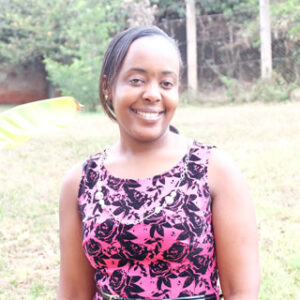
Jane Achando
Legal Officer
Jane Achando, an Advocate of the High Court of Kenya, holds a Masters Degree in Business Administration (strategic management) from the Kenya Methodist University, a Post Graduate Diploma in Law from the Kenya School of Law and a Bachelors of Law (LLB) from the University of South Africa. Prior to joining AATF she worked at Family Health International (Kenya) as a Contract and Grants Consultant where she was involved in the close out phase of the Aids Population and Health Integrated Assistance II (APHIA) project. Jane has worked as a litigation advocate at Kelly & Company Advocates and as a legal assistant at Musyoka, Wambua & Katiku Advocates. At AATF, Jane is responsible for managing the AATF Contract Lifecycle Management System, negotiating, drafting and management of license agreements for technology development and deployment; facilitating and coordinating the filing of project and institutional intellectual property rights, updating and maintaining the intranet board folder, assisting the Director of Legal Affairs with corporate compliance functions; organising and facilitating project intellectual property meetings; assisting the Director of Legal Affairs in managing the AATF Technology and Innovation Support Centre; and assisting in intellectual property trainings for AATF and other partners. Jane is a Kenya

Moussa Elhadj Adam
Director Finance & Administration

Ousmane Badiane
Chair, Board of Trustees
Ousmane Badiane is the Founder and Executive Chairperson of AKADEMIYA2063 which is an international non-profit organization with headquarters in Rwanda and a regional office in Senegal. AKADEMIYA2063’s overall mission is to create state-of-the art technical capacities across Africa to support the efforts by the Member States of the African Union to achieve the key goals of the Agenda 2063 of transforming national economies to boost growth and prosperity. He also initiated the Malabo Montpellier Panel which encourages policy innovations for better development outcomes by bringing together leading global experts and decision-makers. He was the Africa Director for the International Food Policy Research Institute (IFPRI). In this role, he oversaw the institute’s two regional offices for West and Central Africa in Dakar and Eastern and Southern Africa in Addis Ababa. He coordinated IFPRI’s work program in the areas of food policy research, capacity strengthening, and policy communications in Africa. He was also in charge of IFPRI’s partnerships with African institutions dealing with the above areas.As an Advisor to the NEPAD Secretariat from 2004 to 2007, he was instrumental in developing and guiding the implementation of the Comprehensive Africa Agriculture Development Programme (CAADP). Before his tenure at IFPRI, Dr Badiane, a national of Senegal, was Lead Specialist for Food and Agricultural Policy for the Africa Region at the World Bank from January 1998 to August 2008. He previously worked at IFPRI as Senior Research Fellow from 1989 to 1997, when he led the institute’s work on market reforms and development.
While at IFPRI, he taught Economics of Development in Africa, as adjunct professor at Johns Hopkins University’s School of Advanced International Studies from 1993 to 2003. Dr Badiane received a Master’s Degree and PhD in agricultural economics from the University of Kiel in Germany.
His awards include a Doctoral Degree Honoris Causa from the University of KwaZulu Natal in South Africa, induction as Fellow of the African Association of Agricultural Economics and the Africa Food Prize in 2015.
